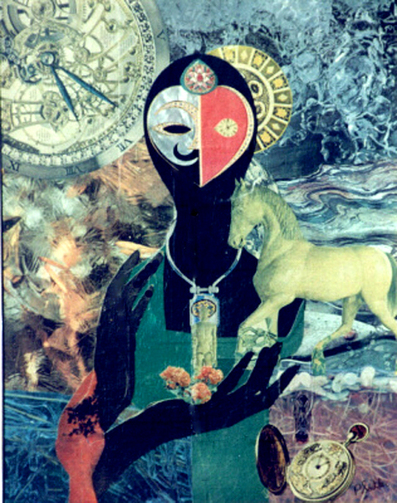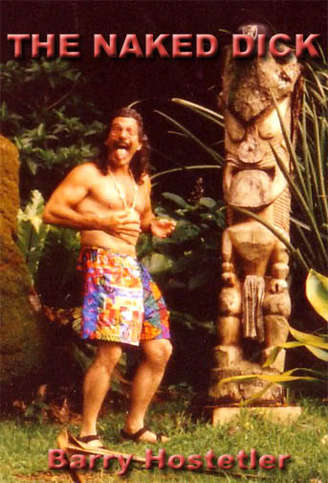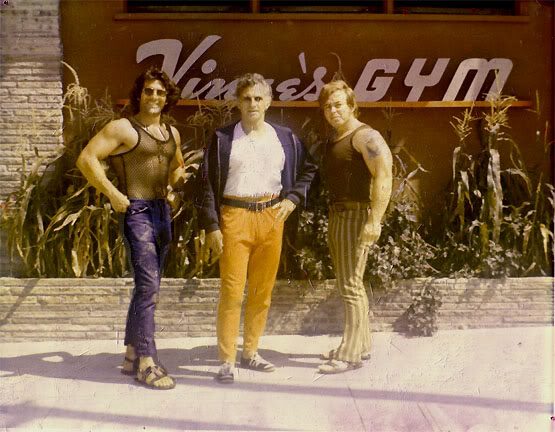MEETINGS WITH REMARKABLE PEOPLE
Selected Personal Influences, Friends & Colleagues
Ralph Waldo Emerson
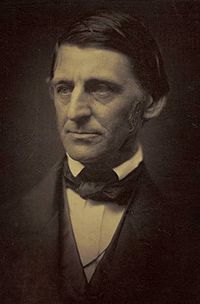
I went to Ralph Waldo Emerson Elementary School, so I got a healthy dose of the Transcendentalist very early in life. It may be a key to my transpersonal and qabalistic interests, as well as a deep love of nature. Through the years, he remained an inspiration and touchstone that I still value highly. He was probably my first mystic influence. Many would follow.
Ralph Waldo Emerson (May 25, 1803 – April 27, 1882) was an American lecturer, essayist, and poet, best remembered for leading the Transcendentalist movement of the mid-19th century. He was seen as a champion of individualism and a prescient critic of the countervailing pressures of society, and he disseminated his thought through dozens of published essays and more than 1,500 public lectures across the United States.
Emerson gradually moved away from the religious and social beliefs of his contemporaries, formulating and expressing the philosophy of Transcendentalism in his 1836 essay, Nature. Following this ground-breaking work, he gave a speech entitled The American Scholar in 1837, which Oliver Wendell Holmes, Sr. considered to be America's "Intellectual Declaration of Independence". Considered one of the great lecturers of the time, Emerson had an enthusiasm and respect for his audience that enraptured crowds.
Emerson wrote most of his important essays as lectures first, then revised them for print. His first two collections of essays – Essays: First Series and Essays: Second Series, published respectively in 1841 and 1844 – represent the core of his thinking, and include such well-known essays as Self-Reliance, The Over-Soul, Circles, The Poet and Experience. Together with Nature, these essays made the decade from the mid-1830s to the mid-1840s Emerson's most fertile period.
Emerson wrote on a number of subjects, never espousing fixed philosophical tenets, but developing certain ideas such as individuality, freedom, the ability for man to realize almost anything, and the relationship between the soul and the surrounding world. Emerson's "nature" was more philosophical than naturalistic; "Philosophically considered, the universe is composed of Nature and the Soul."
While his writing style can be seen as somewhat impenetrable, and was thought so even in his own time, Emerson's essays remain one of the linchpins of American thinking, and Emerson's work has influenced nearly every generation of thinker, writer and poet since his time. When asked to sum up his work, he said his central doctrine was "the infinitude of the private man."
On September 8, 1836, the day before the publication of Nature, Emerson met with Henry Hedge, George Putnam and George Ripley to plan periodic gathers of other like-minded intellectuals This was the beginning of the Transcendental Club, which served as a center for the movement. Its first official meeting was held on September 19, 1836. On September 1, 1837, women attended a meeting of the Transcendental Club for the first time. Emerson invited Margaret Fuller, Elizabeth Hoar and Sarah Ripley for dinner at his home before the meeting to ensure that they would be present for the evening get-together. Fuller would prove to be an important figure in Transcendentalism.
Emerson anonymously published his first essay, Nature, on September 9, 1836. A year later, on August 31, 1837, Emerson delivered his now-famous Phi Beta Kappa address, "The American Scholar", then known as "An Oration, Delivered before the Phi Beta Kappa Society at Cambridge"; it was renamed for a collection of essays (which included the first general publication of "Nature") in 1849. Friends urged him to publish the talk, and he did so, at his own expense, in an edition of 500 copies, which sold out in a month. In the speech, Emerson declared literary independence in the United States and urged Americans to create a writing style all their own and free from Europe. James Russell Lowell, who was a student at Harvard at the time, called it "an event without former parallel on our literary annals". Another member of the audience, Reverend John Pierce, called it "an apparently incoherent and unintelligible address".
In 1837, Emerson befriended Henry David Thoreau. Though they had likely met as early as 1835, in the fall of 1837, Emerson asked Thoreau, "Do you keep a journal?" The question went on to have a lifelong inspiration for Thoreau.
In March 1837, Emerson gave a series of lectures on The Philosophy of History at Boston's Masonic Temple. This was the first time he managed a lecture series on his own, and was the beginning of his serious career as a lecturer. The profits from this series of lectures were much larger than when he was paid by an organization to talk, and Emerson continued to manage his own lectures often throughout his lifetime.
On July 15, 1838,[68] Emerson was invited to Divinity Hall, Harvard Divinity School for the school's graduation address, which came to be known as his "Divinity School Address". Emerson discounted Biblical miracles and proclaimed that, while Jesus was a great man, he was not God: historical Christianity, he said, had turned Jesus into a "demigod, as the Orientals or the Greeks would describe Osiris or Apollo".[69] His comments outraged the establishment and the general Protestant community. For this, he was denounced as an atheist,[69] and a poisoner of young men's minds. Despite the roar of critics, he made no reply, leaving others to put forward a defense. He was not invited back to speak at Harvard for another thirty years.[70]
The Transcendental group began to publish its flagship journal, The Dial, in July 1840.[71] They planned the journal as early as October 1839, but work did not begin until the first week of 1840.[72] George Ripley was its managing editor[73] and Margaret Fuller was its first editor, having been hand-chosen by Emerson after several others had declined the role.[74] Fuller stayed on for about two years and Emerson took over, utilizing the journal to promote talented young writers including Ellery Channing and Thoreau.[66]
It was in 1841 that Emerson published Essays, his second book, which included the famous essay, "Self-Reliance".[75] His aunt called it a "strange medley of atheism and false independence", but it gained favorable reviews in London and Paris. This book, and its popular reception, more than any of Emerson's contributions to date laid the groundwork for his international fame.[76]
In January 1842 Emerson's first son Waldo died from scarlet fever.[77] Emerson wrote of his grief in the poem "Threnody" ("For this losing is true dying"),[78] and the essay "Experience". In the same year, William James was born, and Emerson agreed to be his godfather.
Bronson Alcott announced his plans in November 1842 to find "a farm of a hundred acres in excellent condition with good buildings, a good orchard and grounds".[79] Charles Lane purchased a 90-acre (360,000 m2) farm in Harvard, Massachusetts, in May 1843 for what would become Fruitlands, a community based on Utopian ideals inspired in part by Transcendentalism.[80] The farm would run based on a communal effort, using no animals for labor; its participants would eat no meat and use no wool or leather.[81] Emerson said he felt "sad at heart" for not engaging in the experiment himself.[82] Even so, he did not feel Fruitlands would be a success. "Their whole doctrine is spiritual", he wrote, "but they always end with saying, Give us much land and money".[83] Even Alcott admitted he was not prepared for the difficulty in operating Fruitlands. "None of us were prepared to actualize practically the ideal life of which we dreamed. So we fell apart", he wrote.[84] After its failure, Emerson helped buy a farm for Alcott's family in Concord[83] which Alcott named "Hillside".[84]
The Dial ceased publication in April 1844; Horace Greeley reported it as an end to the "most original and thoughtful periodical ever published in this country".[85] (An unrelated magazine of the same name would be published in several periods through 1929.)
In 1844, Emerson published his second collection of essays, entitled "Essays: Second Series." This collection included "The Poet," "Experience," "Gifts," and an essay entitled "Nature," a different work from the 1836 essay of the same name.
Emerson made a living as a popular lecturer in New England and much of the rest of the country. He had begun lecturing in 1833; by the 1850s he was giving as many as 80 per year.[86] Emerson spoke on a wide variety of subjects and many of his essays grew out of his lectures. He charged between $10 and $50 for each appearance, bringing him as much as $2,000 in a typical winter "season".This was more than his earnings from other sources. In some years, he earned as much as $900 for a series of six lectures, and in another, for a winter series of talks in Boston, he netted $1,600.[87] He eventually gave some 1,500 lectures in his lifetime. His earnings allowed him to expand his property, buying eleven acres of land by Walden Pond and a few more acres in a neighboring pine grove. He wrote that he was "landlord and waterlord of 14 acres, more or less".[83]
Emerson was introduced to Indian philosophy when reading the works of French philosopher Victor Cousin.[88] In 1845, Emerson's journals show he was reading the Bhagavad Gita and Henry Thomas Colebrooke's Essays on the Vedas.[89] Emerson was strongly influenced by the Vedas, and much of his writing has strong shades of nondualism. One of the clearest examples of this can be found in his essay "The Over-soul":
We live in succession, in division, in parts, in particles. Meantime within man is the soul of the whole; the wise silence; the universal beauty, to which every part and particle is equally related, the eternal ONE. And this deep power in which we exist and whose beatitude is all accessible to us, is not only self-sufficing and perfect in every hour, but the act of seeing and the thing seen, the seer and the spectacle, the subject and the object, are one. We see the world piece by piece, as the sun, the moon, the animal, the tree; but the whole, of which these are shining parts, is the soul.[90]
From 1847 to 1848, he toured England, Scotland, and Ireland.[91] He also visited Paris between the February Revolution and the bloody June Days. When he arrived, he saw the stumps where trees had been cut down to form barricades in the February riots. On May 21 he stood on the Champ de Mars in the midst of mass celebrations for concord, peace and labor. He wrote in his journal: "At the end of the year we shall take account, & see if the Revolution was worth the trees."[92]
In February 1852 Emerson and James Freeman Clarke and William Henry Channing edited an edition of the works and letters of Margaret Fuller, who had died in 1850.[93] Within a week of her death, her New York editor Horace Greeley suggested to Emerson that a biography of Fuller, to be called Margaret and Her Friends, be prepared quickly "before the interest excited by her sad decease has passed away".[94] Published with the title The Memoirs of Margaret Fuller Ossoli,[95] Fuller's words were heavily censored or rewritten.[96] The three editors were not concerned about accuracy; they believed public interest in Fuller was temporary and that she would not survive as a historical figure.[97] Even so, for a time, it was the best-selling biography of the decade and went through thirteen editions before the end of the century.[95]
Walt Whitman published the innovative poetry collection Leaves of Grass in 1855 and sent a copy to Emerson for his opinion. Emerson responded positively, sending a flattering five-page letter as a response.[98] Emerson's approval helped the first edition of Leaves of Grass stir up significant interest[99] and convinced Whitman to issue a second edition shortly thereafter.[100] This edition quoted a phrase from Emerson's letter, printed in gold leaf on the cover: "I Greet You at the Beginning of a Great Career".[101] Emerson took offense that this letter was made public[102] and later became more critical of the work.[103]
Emerson's religious views were often considered radical at the time. He believed that all things are connected to God and, therefore, all things are divine.[127] Critics believed that Emerson was removing the central God figure; as Henry Ware, Jr. said, Emerson was in danger of taking away "the Father of the Universe" and leaving "but a company of children in an orphan asylum".[128] Emerson was partly influenced by German philosophy and Biblical criticism.[129] His views, the basis of Transcendentalism, suggested that God does not have to reveal the truth but that the truth could be intuitively experienced directly from nature.[130]
Ralph Waldo Emerson (May 25, 1803 – April 27, 1882) was an American lecturer, essayist, and poet, best remembered for leading the Transcendentalist movement of the mid-19th century. He was seen as a champion of individualism and a prescient critic of the countervailing pressures of society, and he disseminated his thought through dozens of published essays and more than 1,500 public lectures across the United States.
Emerson gradually moved away from the religious and social beliefs of his contemporaries, formulating and expressing the philosophy of Transcendentalism in his 1836 essay, Nature. Following this ground-breaking work, he gave a speech entitled The American Scholar in 1837, which Oliver Wendell Holmes, Sr. considered to be America's "Intellectual Declaration of Independence". Considered one of the great lecturers of the time, Emerson had an enthusiasm and respect for his audience that enraptured crowds.
Emerson wrote most of his important essays as lectures first, then revised them for print. His first two collections of essays – Essays: First Series and Essays: Second Series, published respectively in 1841 and 1844 – represent the core of his thinking, and include such well-known essays as Self-Reliance, The Over-Soul, Circles, The Poet and Experience. Together with Nature, these essays made the decade from the mid-1830s to the mid-1840s Emerson's most fertile period.
Emerson wrote on a number of subjects, never espousing fixed philosophical tenets, but developing certain ideas such as individuality, freedom, the ability for man to realize almost anything, and the relationship between the soul and the surrounding world. Emerson's "nature" was more philosophical than naturalistic; "Philosophically considered, the universe is composed of Nature and the Soul."
While his writing style can be seen as somewhat impenetrable, and was thought so even in his own time, Emerson's essays remain one of the linchpins of American thinking, and Emerson's work has influenced nearly every generation of thinker, writer and poet since his time. When asked to sum up his work, he said his central doctrine was "the infinitude of the private man."
On September 8, 1836, the day before the publication of Nature, Emerson met with Henry Hedge, George Putnam and George Ripley to plan periodic gathers of other like-minded intellectuals This was the beginning of the Transcendental Club, which served as a center for the movement. Its first official meeting was held on September 19, 1836. On September 1, 1837, women attended a meeting of the Transcendental Club for the first time. Emerson invited Margaret Fuller, Elizabeth Hoar and Sarah Ripley for dinner at his home before the meeting to ensure that they would be present for the evening get-together. Fuller would prove to be an important figure in Transcendentalism.
Emerson anonymously published his first essay, Nature, on September 9, 1836. A year later, on August 31, 1837, Emerson delivered his now-famous Phi Beta Kappa address, "The American Scholar", then known as "An Oration, Delivered before the Phi Beta Kappa Society at Cambridge"; it was renamed for a collection of essays (which included the first general publication of "Nature") in 1849. Friends urged him to publish the talk, and he did so, at his own expense, in an edition of 500 copies, which sold out in a month. In the speech, Emerson declared literary independence in the United States and urged Americans to create a writing style all their own and free from Europe. James Russell Lowell, who was a student at Harvard at the time, called it "an event without former parallel on our literary annals". Another member of the audience, Reverend John Pierce, called it "an apparently incoherent and unintelligible address".
In 1837, Emerson befriended Henry David Thoreau. Though they had likely met as early as 1835, in the fall of 1837, Emerson asked Thoreau, "Do you keep a journal?" The question went on to have a lifelong inspiration for Thoreau.
In March 1837, Emerson gave a series of lectures on The Philosophy of History at Boston's Masonic Temple. This was the first time he managed a lecture series on his own, and was the beginning of his serious career as a lecturer. The profits from this series of lectures were much larger than when he was paid by an organization to talk, and Emerson continued to manage his own lectures often throughout his lifetime.
On July 15, 1838,[68] Emerson was invited to Divinity Hall, Harvard Divinity School for the school's graduation address, which came to be known as his "Divinity School Address". Emerson discounted Biblical miracles and proclaimed that, while Jesus was a great man, he was not God: historical Christianity, he said, had turned Jesus into a "demigod, as the Orientals or the Greeks would describe Osiris or Apollo".[69] His comments outraged the establishment and the general Protestant community. For this, he was denounced as an atheist,[69] and a poisoner of young men's minds. Despite the roar of critics, he made no reply, leaving others to put forward a defense. He was not invited back to speak at Harvard for another thirty years.[70]
The Transcendental group began to publish its flagship journal, The Dial, in July 1840.[71] They planned the journal as early as October 1839, but work did not begin until the first week of 1840.[72] George Ripley was its managing editor[73] and Margaret Fuller was its first editor, having been hand-chosen by Emerson after several others had declined the role.[74] Fuller stayed on for about two years and Emerson took over, utilizing the journal to promote talented young writers including Ellery Channing and Thoreau.[66]
It was in 1841 that Emerson published Essays, his second book, which included the famous essay, "Self-Reliance".[75] His aunt called it a "strange medley of atheism and false independence", but it gained favorable reviews in London and Paris. This book, and its popular reception, more than any of Emerson's contributions to date laid the groundwork for his international fame.[76]
In January 1842 Emerson's first son Waldo died from scarlet fever.[77] Emerson wrote of his grief in the poem "Threnody" ("For this losing is true dying"),[78] and the essay "Experience". In the same year, William James was born, and Emerson agreed to be his godfather.
Bronson Alcott announced his plans in November 1842 to find "a farm of a hundred acres in excellent condition with good buildings, a good orchard and grounds".[79] Charles Lane purchased a 90-acre (360,000 m2) farm in Harvard, Massachusetts, in May 1843 for what would become Fruitlands, a community based on Utopian ideals inspired in part by Transcendentalism.[80] The farm would run based on a communal effort, using no animals for labor; its participants would eat no meat and use no wool or leather.[81] Emerson said he felt "sad at heart" for not engaging in the experiment himself.[82] Even so, he did not feel Fruitlands would be a success. "Their whole doctrine is spiritual", he wrote, "but they always end with saying, Give us much land and money".[83] Even Alcott admitted he was not prepared for the difficulty in operating Fruitlands. "None of us were prepared to actualize practically the ideal life of which we dreamed. So we fell apart", he wrote.[84] After its failure, Emerson helped buy a farm for Alcott's family in Concord[83] which Alcott named "Hillside".[84]
The Dial ceased publication in April 1844; Horace Greeley reported it as an end to the "most original and thoughtful periodical ever published in this country".[85] (An unrelated magazine of the same name would be published in several periods through 1929.)
In 1844, Emerson published his second collection of essays, entitled "Essays: Second Series." This collection included "The Poet," "Experience," "Gifts," and an essay entitled "Nature," a different work from the 1836 essay of the same name.
Emerson made a living as a popular lecturer in New England and much of the rest of the country. He had begun lecturing in 1833; by the 1850s he was giving as many as 80 per year.[86] Emerson spoke on a wide variety of subjects and many of his essays grew out of his lectures. He charged between $10 and $50 for each appearance, bringing him as much as $2,000 in a typical winter "season".This was more than his earnings from other sources. In some years, he earned as much as $900 for a series of six lectures, and in another, for a winter series of talks in Boston, he netted $1,600.[87] He eventually gave some 1,500 lectures in his lifetime. His earnings allowed him to expand his property, buying eleven acres of land by Walden Pond and a few more acres in a neighboring pine grove. He wrote that he was "landlord and waterlord of 14 acres, more or less".[83]
Emerson was introduced to Indian philosophy when reading the works of French philosopher Victor Cousin.[88] In 1845, Emerson's journals show he was reading the Bhagavad Gita and Henry Thomas Colebrooke's Essays on the Vedas.[89] Emerson was strongly influenced by the Vedas, and much of his writing has strong shades of nondualism. One of the clearest examples of this can be found in his essay "The Over-soul":
We live in succession, in division, in parts, in particles. Meantime within man is the soul of the whole; the wise silence; the universal beauty, to which every part and particle is equally related, the eternal ONE. And this deep power in which we exist and whose beatitude is all accessible to us, is not only self-sufficing and perfect in every hour, but the act of seeing and the thing seen, the seer and the spectacle, the subject and the object, are one. We see the world piece by piece, as the sun, the moon, the animal, the tree; but the whole, of which these are shining parts, is the soul.[90]
From 1847 to 1848, he toured England, Scotland, and Ireland.[91] He also visited Paris between the February Revolution and the bloody June Days. When he arrived, he saw the stumps where trees had been cut down to form barricades in the February riots. On May 21 he stood on the Champ de Mars in the midst of mass celebrations for concord, peace and labor. He wrote in his journal: "At the end of the year we shall take account, & see if the Revolution was worth the trees."[92]
In February 1852 Emerson and James Freeman Clarke and William Henry Channing edited an edition of the works and letters of Margaret Fuller, who had died in 1850.[93] Within a week of her death, her New York editor Horace Greeley suggested to Emerson that a biography of Fuller, to be called Margaret and Her Friends, be prepared quickly "before the interest excited by her sad decease has passed away".[94] Published with the title The Memoirs of Margaret Fuller Ossoli,[95] Fuller's words were heavily censored or rewritten.[96] The three editors were not concerned about accuracy; they believed public interest in Fuller was temporary and that she would not survive as a historical figure.[97] Even so, for a time, it was the best-selling biography of the decade and went through thirteen editions before the end of the century.[95]
Walt Whitman published the innovative poetry collection Leaves of Grass in 1855 and sent a copy to Emerson for his opinion. Emerson responded positively, sending a flattering five-page letter as a response.[98] Emerson's approval helped the first edition of Leaves of Grass stir up significant interest[99] and convinced Whitman to issue a second edition shortly thereafter.[100] This edition quoted a phrase from Emerson's letter, printed in gold leaf on the cover: "I Greet You at the Beginning of a Great Career".[101] Emerson took offense that this letter was made public[102] and later became more critical of the work.[103]
Emerson's religious views were often considered radical at the time. He believed that all things are connected to God and, therefore, all things are divine.[127] Critics believed that Emerson was removing the central God figure; as Henry Ware, Jr. said, Emerson was in danger of taking away "the Father of the Universe" and leaving "but a company of children in an orphan asylum".[128] Emerson was partly influenced by German philosophy and Biblical criticism.[129] His views, the basis of Transcendentalism, suggested that God does not have to reveal the truth but that the truth could be intuitively experienced directly from nature.[130]
Krishnamurti: Philosopher [deceased]
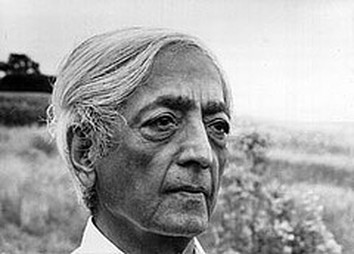
When I first moved to Ojai, California it was a hotbed of Theosophical thought. Krishnamurti was actively involved with his Foundation, which was still rather small. His talks were still accessible. He was an early influence and reminder of the danger of personality cults and the virtues of independent thinking. Later, when he teamed up with physicist David Bohm, his holistic perspective backed up the holographic paradigm philosophically. Philosophy is the heart of academia. He was a good example of an alternative spirituality activist when there weren't many.
Jiddu Krishnamurti (Telugu: జిడ్డు కృష్ణ మూర్తి) or J. Krishnamurti (Telugu: జే . కృష్ణ మూర్తి, Tamil: கிருஷ்ணமூர்த்தி), (12 May 1895 – 17 February 1986) was a writer and speaker on philosophical and spiritual issues. His subject matter included psychological revolution, the nature of the mind, meditation, human relationships, and bringing about positive change in society. Maintaining that society is ultimately the product of the interactions of individuals, he held that fundamental societal change can emerge only through freely undertaken radical change in the individual. He constantly stressed the need for a revolution in the psyche of every human being and emphasized that such revolution cannot be brought about by any external entity, be it religious, political, or social.
Krishnamurti was born into a Telugu Brahmin family in what was then colonial India. In early adolescence, while living next to the Theosophical Society headquarters at Adyar in Madras, he encountered prominent occultist and high-ranking Theosophist Charles Webster Leadbeater. He was subsequently raised under the tutelage of Leadbeater and Annie Besant, leaders of the Society at the time, who believed him to be the likely "vehicle" for an expected World Teacher.
As a young man, he disavowed this idea and dissolved the worldwide organization (the Order of the Star) established to support it. Denouncing the concept of saviors, spiritual leaders, or any other intermediaries to reality, he urged people to directly discover the underlying causes of the problems facing individuals and society. Such discovery he considered as being within reach of everyone, irrespective of background, ability, or disposition. He declared allegiance to no nationality, caste, religion, or philosophy, and spent the rest of his life traveling the world as an independent individual speaker, speaking to large and small groups, as well as with interested individuals. He authored a number of books, among them The First and Last Freedom, The Only Revolution, and Krishnamurti's Notebook. In addition, a large collection of his talks and discussions have been published. His last public talk was in Madras, India, in January 1986, a month before his death at his home in Ojai, California.
In the early 1960s, his associates again started noticing deep changes in Krishnamurti. Jayakar wrote that "he would never be the same again. The Krishnaji who had laughed with us, walked with us ... this Krishnaji would vanish. A new Krishnaji would emerge - stern, impatient, questioning... He would be compassionate, but he would also be the teacher, demanding answers to fundamental questions. All great laughter and play had ended."[149] His audience was also changing: reflecting the cultural changes of the 1960s, which included an intensified search for alternative lifestyles and experiences, there was a noticeable influx of young people in his talks and discussions, while his books, both new titles and older, generated renewed and wider interest.[150] Krishnamurti’s evolving philosophy apparently proved too austere and rigorous for many of the new young participants; however new regular gatherings, such as the ones at Saanen, Switzerland, eventually became a focus for "serious ... people concerned with the enormous challenges to humankind".[151]
Along with his changing audience and outlook, Krishnamurti's subject matter had evolved to encompass several new and different concepts: the idea that individuality is an illusion,[152] the notion that true love, beauty, peace, and goodness, have no opposites - such duality being only a construct of thought[153] - and the need for a radical mutation.[154] In the early 1970s he mentioned that the new approach represented an "unfolding ... the teaching is in the same direction", but "it is holistic rather than an examination of detail."[148] As far as he was concerned, the fundamental teachings remained unchanged.[155]
In late 1980, he took the opportunity to reaffirm the basic elements of his message in a written statement that came to be known as the "Core of the Teaching". An excerpt follows: The core of Krishnamurti's teaching is contained in the statement he made in 1929 when he said: "Truth is a pathless land". Man cannot come to it through any organization, through any creed, through any dogma, priest or ritual, nor through any philosophical knowledge or psychological technique. He has to find it through the mirror of relationship, through the understanding of the contents of his own mind, through observation, and not through intellectual analysis or introspective dissection. Man has built in himself images as a sense of security - religious, political, personal. These manifest as symbols, ideas, beliefs. The burden of these dominates man's thinking, relationships and his daily life. These are the causes of our problems for they divide man from man in every relationship.[156]
In the 1970s, Krishnamurti met several times with then Indian prime minister Indira Gandhi, with whom he had far ranging, and apparently in some cases very serious discussions. His true impact on Indian political life is unknown; however Jayakar considers his attitude and message in these meetings as a possible influence in the lifting of certain emergency measures Gandhi had imposed during periods of political turmoil.[157] During the late 1960s and early 1970s, Krishnamurti and his associates reorganized previous institutions into four geographically dispersed non-profit Foundations, designated the Official bodies responsible for disseminating the teachings and sponsoring the schools.[158] Meanwhile, Krishnamurti's once close relationship with the Rajagopals had deteriorated to the point where Krishnamurti took D. Rajagopal to court in order to recover donated property and funds, publication rights for his works, manuscripts, and personal correspondence, that were in D. Rajagopal's possession.[159] The litigation and ensuing cross complaints, which formally began 1971, continued for many years. A substantial portion of materials and property was returned to Krishnamurti during his lifetime; the parties to this litigation finally settled all other matters in 1986, shortly after his death.[160][161]
Beginning in the late 1960s and continuing until his death, Krishnamurti and close associates engaged in private discussions - some of which have been at least partially made public[162] - regarding himself, his "discovery", his later development, the meaning of the continuing "process"[163] - and the source of the teaching. It seemed that Krishnamurti "in later life begun to delve into the mystery of his background in an attempt to come to terms with his own uniqueness."[164] The discussions also broached subjects that Krishnamurti would not usually approach in public, such as the existence of evil,[165] a feeling of "protection" he had,[166] or the nature of the "otherness" – the non-personified "presence" that he, and sometimes others around him, felt.[167] The discussions did not reach any conclusions - Krishnamurti several times stated that he did not know what the truth was relative to these inquiries - and whether he could, or should, find it out. He nevertheless examined several approaches, some of which he considered more likely than others.[168] He insisted that he did not want to make "a mystery" out of all this; Mary Lutyens comments that "yet ... a mystery remains."[169]
The Core of the Teachings (1974):"The core of Krishnamurti's teaching is contained in the statement he made in 1929 when he said 'Truth is a pathless land'. Man cannot come to it through any organization, through any creed, through any dogma, priest or ritual, not through any philosophical knowledge or psychological technique. He has to find it through the mirror of relationship, through the understanding of the contents of his own mind, through observation and not through intellectual analysis or introspective dissection. Man has built in himself images as a fence of security - religious, political, personal. These manifest as symbols, ideas, beliefs. The burden of these images dominates man's thinking, his relationships and his daily life. These images are the causes of our problems for they divide man from man. His perception of life is shaped by the concepts already established in his mind. The content of his consciousness is his entire existence. This content is common to all humanity. The individuality is the name, the form and superficial culture he acquires from tradition and environment. The uniqueness of man does not lie in the superficial but in complete freedom from the content of his consciousness, which is common to all mankind. So he is not an individual.
Freedom is not a reaction; freedom is not a choice. It is man's pretence that because he has choice he is free. Freedom is pure observation without direction, without fear of punishment and reward. Freedom is without motive; freedom is not at the end of the evolution of man but lies in the first step of his existence. In observation one begins to discover the lack of freedom. Freedom is found in the choiceless awareness of our daily existence. Thought is time. Thought is born of experience, of knowledge, which are inseparable from time. Time is the psychological enemy of man. Our action is based on knowledge and therefore time, so man is always a slave to the past. When man becomes aware of the movement of his own consciousness he will see the division between the thinker and the thought, the observer and the observed, the experiencer and the experience. He will discover that this division is an illusion. Then only is there pure observation which is insight without any shadow of the past . This timeless insight brings about a deep radical mutation in the mind. Total negation is the essence of the positive. When there is negation of all those things which are not love – desire, pleasure – then love is, with its compassion and intelligence." London, October 21, 1980, © 1980 Krishnamurti Foundation Trust
Jiddu Krishnamurti (Telugu: జిడ్డు కృష్ణ మూర్తి) or J. Krishnamurti (Telugu: జే . కృష్ణ మూర్తి, Tamil: கிருஷ்ணமூர்த்தி), (12 May 1895 – 17 February 1986) was a writer and speaker on philosophical and spiritual issues. His subject matter included psychological revolution, the nature of the mind, meditation, human relationships, and bringing about positive change in society. Maintaining that society is ultimately the product of the interactions of individuals, he held that fundamental societal change can emerge only through freely undertaken radical change in the individual. He constantly stressed the need for a revolution in the psyche of every human being and emphasized that such revolution cannot be brought about by any external entity, be it religious, political, or social.
Krishnamurti was born into a Telugu Brahmin family in what was then colonial India. In early adolescence, while living next to the Theosophical Society headquarters at Adyar in Madras, he encountered prominent occultist and high-ranking Theosophist Charles Webster Leadbeater. He was subsequently raised under the tutelage of Leadbeater and Annie Besant, leaders of the Society at the time, who believed him to be the likely "vehicle" for an expected World Teacher.
As a young man, he disavowed this idea and dissolved the worldwide organization (the Order of the Star) established to support it. Denouncing the concept of saviors, spiritual leaders, or any other intermediaries to reality, he urged people to directly discover the underlying causes of the problems facing individuals and society. Such discovery he considered as being within reach of everyone, irrespective of background, ability, or disposition. He declared allegiance to no nationality, caste, religion, or philosophy, and spent the rest of his life traveling the world as an independent individual speaker, speaking to large and small groups, as well as with interested individuals. He authored a number of books, among them The First and Last Freedom, The Only Revolution, and Krishnamurti's Notebook. In addition, a large collection of his talks and discussions have been published. His last public talk was in Madras, India, in January 1986, a month before his death at his home in Ojai, California.
In the early 1960s, his associates again started noticing deep changes in Krishnamurti. Jayakar wrote that "he would never be the same again. The Krishnaji who had laughed with us, walked with us ... this Krishnaji would vanish. A new Krishnaji would emerge - stern, impatient, questioning... He would be compassionate, but he would also be the teacher, demanding answers to fundamental questions. All great laughter and play had ended."[149] His audience was also changing: reflecting the cultural changes of the 1960s, which included an intensified search for alternative lifestyles and experiences, there was a noticeable influx of young people in his talks and discussions, while his books, both new titles and older, generated renewed and wider interest.[150] Krishnamurti’s evolving philosophy apparently proved too austere and rigorous for many of the new young participants; however new regular gatherings, such as the ones at Saanen, Switzerland, eventually became a focus for "serious ... people concerned with the enormous challenges to humankind".[151]
Along with his changing audience and outlook, Krishnamurti's subject matter had evolved to encompass several new and different concepts: the idea that individuality is an illusion,[152] the notion that true love, beauty, peace, and goodness, have no opposites - such duality being only a construct of thought[153] - and the need for a radical mutation.[154] In the early 1970s he mentioned that the new approach represented an "unfolding ... the teaching is in the same direction", but "it is holistic rather than an examination of detail."[148] As far as he was concerned, the fundamental teachings remained unchanged.[155]
In late 1980, he took the opportunity to reaffirm the basic elements of his message in a written statement that came to be known as the "Core of the Teaching". An excerpt follows: The core of Krishnamurti's teaching is contained in the statement he made in 1929 when he said: "Truth is a pathless land". Man cannot come to it through any organization, through any creed, through any dogma, priest or ritual, nor through any philosophical knowledge or psychological technique. He has to find it through the mirror of relationship, through the understanding of the contents of his own mind, through observation, and not through intellectual analysis or introspective dissection. Man has built in himself images as a sense of security - religious, political, personal. These manifest as symbols, ideas, beliefs. The burden of these dominates man's thinking, relationships and his daily life. These are the causes of our problems for they divide man from man in every relationship.[156]
In the 1970s, Krishnamurti met several times with then Indian prime minister Indira Gandhi, with whom he had far ranging, and apparently in some cases very serious discussions. His true impact on Indian political life is unknown; however Jayakar considers his attitude and message in these meetings as a possible influence in the lifting of certain emergency measures Gandhi had imposed during periods of political turmoil.[157] During the late 1960s and early 1970s, Krishnamurti and his associates reorganized previous institutions into four geographically dispersed non-profit Foundations, designated the Official bodies responsible for disseminating the teachings and sponsoring the schools.[158] Meanwhile, Krishnamurti's once close relationship with the Rajagopals had deteriorated to the point where Krishnamurti took D. Rajagopal to court in order to recover donated property and funds, publication rights for his works, manuscripts, and personal correspondence, that were in D. Rajagopal's possession.[159] The litigation and ensuing cross complaints, which formally began 1971, continued for many years. A substantial portion of materials and property was returned to Krishnamurti during his lifetime; the parties to this litigation finally settled all other matters in 1986, shortly after his death.[160][161]
Beginning in the late 1960s and continuing until his death, Krishnamurti and close associates engaged in private discussions - some of which have been at least partially made public[162] - regarding himself, his "discovery", his later development, the meaning of the continuing "process"[163] - and the source of the teaching. It seemed that Krishnamurti "in later life begun to delve into the mystery of his background in an attempt to come to terms with his own uniqueness."[164] The discussions also broached subjects that Krishnamurti would not usually approach in public, such as the existence of evil,[165] a feeling of "protection" he had,[166] or the nature of the "otherness" – the non-personified "presence" that he, and sometimes others around him, felt.[167] The discussions did not reach any conclusions - Krishnamurti several times stated that he did not know what the truth was relative to these inquiries - and whether he could, or should, find it out. He nevertheless examined several approaches, some of which he considered more likely than others.[168] He insisted that he did not want to make "a mystery" out of all this; Mary Lutyens comments that "yet ... a mystery remains."[169]
The Core of the Teachings (1974):"The core of Krishnamurti's teaching is contained in the statement he made in 1929 when he said 'Truth is a pathless land'. Man cannot come to it through any organization, through any creed, through any dogma, priest or ritual, not through any philosophical knowledge or psychological technique. He has to find it through the mirror of relationship, through the understanding of the contents of his own mind, through observation and not through intellectual analysis or introspective dissection. Man has built in himself images as a fence of security - religious, political, personal. These manifest as symbols, ideas, beliefs. The burden of these images dominates man's thinking, his relationships and his daily life. These images are the causes of our problems for they divide man from man. His perception of life is shaped by the concepts already established in his mind. The content of his consciousness is his entire existence. This content is common to all humanity. The individuality is the name, the form and superficial culture he acquires from tradition and environment. The uniqueness of man does not lie in the superficial but in complete freedom from the content of his consciousness, which is common to all mankind. So he is not an individual.
Freedom is not a reaction; freedom is not a choice. It is man's pretence that because he has choice he is free. Freedom is pure observation without direction, without fear of punishment and reward. Freedom is without motive; freedom is not at the end of the evolution of man but lies in the first step of his existence. In observation one begins to discover the lack of freedom. Freedom is found in the choiceless awareness of our daily existence. Thought is time. Thought is born of experience, of knowledge, which are inseparable from time. Time is the psychological enemy of man. Our action is based on knowledge and therefore time, so man is always a slave to the past. When man becomes aware of the movement of his own consciousness he will see the division between the thinker and the thought, the observer and the observed, the experiencer and the experience. He will discover that this division is an illusion. Then only is there pure observation which is insight without any shadow of the past . This timeless insight brings about a deep radical mutation in the mind. Total negation is the essence of the positive. When there is negation of all those things which are not love – desire, pleasure – then love is, with its compassion and intelligence." London, October 21, 1980, © 1980 Krishnamurti Foundation Trust
Phyllis Seckler, OTO, AA: Spiritual Teacher [deceased]
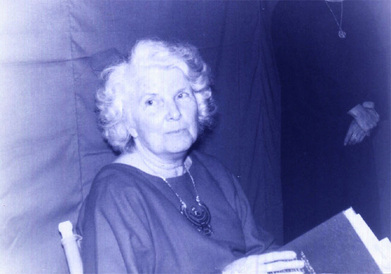
Phyllis Evalina Seckler (1917 - 2004), also known as Soror Meral, was a ninth degree (IX°) member of the "Sovereign Sanctuary of the Gnosis" of Ordo Templi Orientis, and a student of Jane Wolfe, herself a student of Aleister Crowley. Sr. Meral was Master of 418 Lodge of O.T.O. from its inception in 1979 until her death in 2004 (aged 86–87). She was also founder of the College of Thelema; and co-founder, with Anna-Kria King and James A. Eshelman, of the Temple of Thelema, both of which organizations she also led until her death. Prior to her death, she also warranted the founding of the College of Thelema of Northern California as an autonomous continuation of her work, and the Temple of the Silver Star (the initiatory Order within the College of Thelema of Northern California.) She was a writer for and editor of In the Continuum, the journal of the College of Thelema, for nearly 25 years.
For a brief period in the 1970s, she was married to Grady McMurtry. It was as a result of a 1968 letter from Seckler that McMurtry (Fra. Hymenaeus Alpha) invoked his "emergency powers" to reconstitute the order—which had flagged following the death of Aleister Crowley's successor as "Outer Head of the Order," Karl Germer—taking the title "Caliph of O.T.O." It was under their combined leadership that the Order was incorporated under California law and began to grow for the first time since Crowley's death.
For a brief period in the 1970s, she was married to Grady McMurtry. It was as a result of a 1968 letter from Seckler that McMurtry (Fra. Hymenaeus Alpha) invoked his "emergency powers" to reconstitute the order—which had flagged following the death of Aleister Crowley's successor as "Outer Head of the Order," Karl Germer—taking the title "Caliph of O.T.O." It was under their combined leadership that the Order was incorporated under California law and began to grow for the first time since Crowley's death.
During Crowley's lifetime there was only one active O.T.O. lodge in the USA, the so-called 'second' Agapé Lodge in California.One of its members Grady Louis McMurtry, received some special instructions from Crowley which stated that in "case of emergency" McMurtry was to take over this lodge, subject to the approval of Crowley's heir insofar as the O.T.O. went, a German called Karl Germer. Germer did not think much of McMurtry (calling him a "Minus" and saying that the US was a "spiritual desert"), and he closed Agapé on 7 September 1953; Germer now favoured H.J. Metzger from Switzerland as his own O.T.O. successor. With that, McMurtry completely lost interest in the O.T.O..
In the 1960's, a former member of Agapé called Mildred Burlingame "initiated" Jean Brayton with some of Crowley's O.T.O. rituals; Brayton's resultant group was something like a motherless satellite of a defunct lodge. Neither Burlingame nor McMurtry (who later decided he was interested in the O.T.O. after all) had permission either to initiate or found a new lodge of the O.T.O.; indeed it was (and presumably still is) explicitly forbodden in the O.T.O.'s statutes to initiate candidates or establish new lodges without a superior officer's permission.
When Charles Manson became involved with Jean Brayton's Solar Lodge, McMurtry informed on Brayton to the FBI to avoid the FBI investigating him. He also provided the journalist Ed Sanders with material about the affair - and in return Sanders made no mention of McMurtry in his book "The Family" about the Manson murders. Now McMurtry, together with his wife Phyllis Seckler founded a group called 'The Continuum', and started publishing Crowley material. The Continuum was the nucleus of the 'Caliphate' a new O.T.O. founded in 1977 for the purpose of receiving tax-free status as a religious body, and to benefit from the royalties generated by supposed Crowley copyrights worldwide. Unfortunately for the 'Caliphate', Crowley's Last Will and Testament did not mention McMurtry at all, but named the Englishman John Symonds as his "Literary Executor".
Brayton's Solar Lodge of theO.T.O. existed before the 'Caliphate' did; now McMurtry somehow had to get rid of this unwanted competition, and fly in the face of the facts to proclaim himself as a self-appointed Head of the O.T.O., with worldwide supremacy. He founded a new Agapé Lodge, called it a Grand Lodge and embarked on a campaign of either silencing or activating other O.T.O. lodges or members - which of the two he did was dependant on their willingness to accept his authority. This was why he called Brayton's lodge "irregular", asserting that Mildred Burlingame's power to initiate had been invalid, but at the same time accepting as valid other ex-second-Agapé members who supported his claims - like his own wife. McMurtry not only ignored the claims of Mrs. Burlingame, but also those of Kenneth Grant, Marcelo Ramos Motta, and H.J. Metzger. A carefully-mounted propaganda campaign did the rest in upholding McMurtry's fantasies.
Either both Brayton's Solar Lodge and the 'Caliphate' are regular branches of the O.T.O. (that is, independent satellites of a defunct O.T.O. lodge dissolved in 1953), or neither are. Later, some of the powers-that-be inside the 'Caliphate' noticed that McMurtry had based his claims on a contradiction, and conceded belatedly that Mrs. Burlingame "performed limited O.T.O. activities" - though without specifying what these were.
In the 1960's, a former member of Agapé called Mildred Burlingame "initiated" Jean Brayton with some of Crowley's O.T.O. rituals; Brayton's resultant group was something like a motherless satellite of a defunct lodge. Neither Burlingame nor McMurtry (who later decided he was interested in the O.T.O. after all) had permission either to initiate or found a new lodge of the O.T.O.; indeed it was (and presumably still is) explicitly forbodden in the O.T.O.'s statutes to initiate candidates or establish new lodges without a superior officer's permission.
When Charles Manson became involved with Jean Brayton's Solar Lodge, McMurtry informed on Brayton to the FBI to avoid the FBI investigating him. He also provided the journalist Ed Sanders with material about the affair - and in return Sanders made no mention of McMurtry in his book "The Family" about the Manson murders. Now McMurtry, together with his wife Phyllis Seckler founded a group called 'The Continuum', and started publishing Crowley material. The Continuum was the nucleus of the 'Caliphate' a new O.T.O. founded in 1977 for the purpose of receiving tax-free status as a religious body, and to benefit from the royalties generated by supposed Crowley copyrights worldwide. Unfortunately for the 'Caliphate', Crowley's Last Will and Testament did not mention McMurtry at all, but named the Englishman John Symonds as his "Literary Executor".
Brayton's Solar Lodge of theO.T.O. existed before the 'Caliphate' did; now McMurtry somehow had to get rid of this unwanted competition, and fly in the face of the facts to proclaim himself as a self-appointed Head of the O.T.O., with worldwide supremacy. He founded a new Agapé Lodge, called it a Grand Lodge and embarked on a campaign of either silencing or activating other O.T.O. lodges or members - which of the two he did was dependant on their willingness to accept his authority. This was why he called Brayton's lodge "irregular", asserting that Mildred Burlingame's power to initiate had been invalid, but at the same time accepting as valid other ex-second-Agapé members who supported his claims - like his own wife. McMurtry not only ignored the claims of Mrs. Burlingame, but also those of Kenneth Grant, Marcelo Ramos Motta, and H.J. Metzger. A carefully-mounted propaganda campaign did the rest in upholding McMurtry's fantasies.
Either both Brayton's Solar Lodge and the 'Caliphate' are regular branches of the O.T.O. (that is, independent satellites of a defunct O.T.O. lodge dissolved in 1953), or neither are. Later, some of the powers-that-be inside the 'Caliphate' noticed that McMurtry had based his claims on a contradiction, and conceded belatedly that Mrs. Burlingame "performed limited O.T.O. activities" - though without specifying what these were.
Helen Parsons Smith, OTO: Magick Pioneer [deceased]
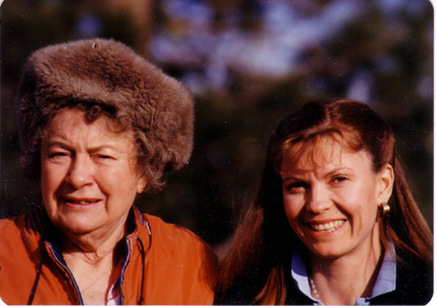
Advancement in the Light : Helen Parsons Smith celebrated her Greater Feast on 27th July 2003 e.v. at the age of 93. Well known by name as the oldest and longest serving initiate in the Order, she lived a quiet life during her long retirement, and few members in the modern resurgence of the O.T.O. had opportunities to meet her. Born in Chicago, the daughter of Burton and Olga Northrup, she moved with her family to southern California early in life, and worked during the 1930s for her father's firm Northrup Business Adjustments. She met Jack Parsons at a church social, they were married in the spring of 1935, and they bought a house in Pasadena which became a center for interesting visitors and wide- ranging discussions during their seven years together there. In 1939 a chance encounter with Crowley's volume Konx Om Pax led them to investigate Thelema, and soon Jack and Helen were attending Wilfred Smith's celebrations of the gnostic mass at Agape Lodge in Los Angeles. They were initiated together as Minervals and First Degree members of O.T.O. on 15th February 1941 e.v., and Helen the same day was accepted for membership in the A A as Soror Grimaud. Within a year they were among the most active members at Agape, both working very closely with the lodgemaster, and in June 1942 they sold their house to lease an old mansion on Orange Grove Avenue in Pasadena and establish a better temple for the lodge. Within a few months of that move their relationship dissolved; Helen became pregnant by Wilfred Smith, and in the following year she was divorced by Jack (who for several years afterward lived at the lodge with Helen's younger sister Sara Elizabeth Northrup).
Wilfred Smith was sent into retirement and excluded from O.T.O. membership, with Helen joining him in exile. They were married and moved to Malibu, where they began their own Thelemic group called "The Church of Thelema" and continued performing the gnostic mass together. Left a widow upon Smith's death in 1957 e.v. she remained for years in Malibu, where during the 1960s Helen worked with Gabriel Montenegro to further the cause of Thelema during the period of the O.T.O.'s quiescence. By the 1970s she was established in northern California, where she set about realizing her life-time project of preserving and publishing the writings of Aleister Crowley. Starting her own small company as "Thelema Publications," she produced a fine edition of The Equinox of the Gods and a series of volumes which were small in size but greatly significant for the continuity of Crowley's legacy, including Shih Yi (1971), Khing Kang King, and The Soul of the Desert (both 1974). She became involved in O.T.O. again upon its revival by Grady McMurtry, and her publication of Crowley's translation of the Tao Teh King (Liber CLVII) in 1975 appeared under the O.T.O. imprint as volume III number 8 of The Equinox.
Through the 1980s as the Order expanded she continued to play a role in its guidance, occasionally attending Areopagus meetings, and was able to enjoy some of the fruits of her long dedication. "With veneration for the Magus of the Aquarian Age" (as she wrote in 1990 e.v.), she offered her books to a new generation of Thelemites, "to aid your advancement in the Light." She at last retired from membership during the twilight years of her life, and her preference for complete privacy was respected. Helen Parsons Smith died at Tahoe Forest Hospital, close to where she had made her home at Kings Beach in North Lake Tahoe for twenty-five years, and according to her wishes no funeral services were held. Her son Kwen Smith survives her, with his wife and Helen's two grandchildren, and also two great-grandchildren. Helen remained a true Thelemic occultist throughout her life, and too little information is available concerning her work. It is hoped that the forthcoming publication of The Unknown God, a long awaited biography of Wilfred Smith written with Helen's full cooperation by Martin P. Starr, may contain additional details about a significant period in her long life, during which she may well have been the only regularly active priestess in the world who carried forth the celebration of the mass of Ecclesia Gnostica Catholica.
Wilfred Smith was sent into retirement and excluded from O.T.O. membership, with Helen joining him in exile. They were married and moved to Malibu, where they began their own Thelemic group called "The Church of Thelema" and continued performing the gnostic mass together. Left a widow upon Smith's death in 1957 e.v. she remained for years in Malibu, where during the 1960s Helen worked with Gabriel Montenegro to further the cause of Thelema during the period of the O.T.O.'s quiescence. By the 1970s she was established in northern California, where she set about realizing her life-time project of preserving and publishing the writings of Aleister Crowley. Starting her own small company as "Thelema Publications," she produced a fine edition of The Equinox of the Gods and a series of volumes which were small in size but greatly significant for the continuity of Crowley's legacy, including Shih Yi (1971), Khing Kang King, and The Soul of the Desert (both 1974). She became involved in O.T.O. again upon its revival by Grady McMurtry, and her publication of Crowley's translation of the Tao Teh King (Liber CLVII) in 1975 appeared under the O.T.O. imprint as volume III number 8 of The Equinox.
Through the 1980s as the Order expanded she continued to play a role in its guidance, occasionally attending Areopagus meetings, and was able to enjoy some of the fruits of her long dedication. "With veneration for the Magus of the Aquarian Age" (as she wrote in 1990 e.v.), she offered her books to a new generation of Thelemites, "to aid your advancement in the Light." She at last retired from membership during the twilight years of her life, and her preference for complete privacy was respected. Helen Parsons Smith died at Tahoe Forest Hospital, close to where she had made her home at Kings Beach in North Lake Tahoe for twenty-five years, and according to her wishes no funeral services were held. Her son Kwen Smith survives her, with his wife and Helen's two grandchildren, and also two great-grandchildren. Helen remained a true Thelemic occultist throughout her life, and too little information is available concerning her work. It is hoped that the forthcoming publication of The Unknown God, a long awaited biography of Wilfred Smith written with Helen's full cooperation by Martin P. Starr, may contain additional details about a significant period in her long life, during which she may well have been the only regularly active priestess in the world who carried forth the celebration of the mass of Ecclesia Gnostica Catholica.
Sam Keen
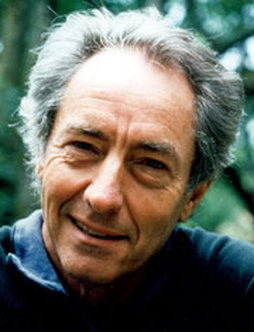
Sam Keen was, in his words, “over-educated at Harvard and Princeton” and was a professor of philosophy and religion at “various legitimate institutions” and a contributing editor of Psychology Today for 20 years before becoming a free-lance thinker, lecturer, seminar leader and consultant. He is the author of a baker’s dozen books, and a co-producer of an award winning PBS documentary, Faces of the Enemy. His work was the subject of a 60 minute PBS special Bill Moyers–Your Mythic Journey with Sam Keen.
When not writing or traveling around the world lecturing and doing seminars on a wide range of topics on which he claims he is “not necessarily an expert but a skilled explorer,” he cuts wood, tends to his farm in the hills above Sonoma, takes long hikes and practices the flying trapeze.
We also both lived near Winthrop, Washington where we shared many wonderful social occaasions and dancing.
When not writing or traveling around the world lecturing and doing seminars on a wide range of topics on which he claims he is “not necessarily an expert but a skilled explorer,” he cuts wood, tends to his farm in the hills above Sonoma, takes long hikes and practices the flying trapeze.
We also both lived near Winthrop, Washington where we shared many wonderful social occaasions and dancing.
Tom Lyttle: Writer, Editor, Art Dealer [deceased] http://tomlyttle.weebly.com
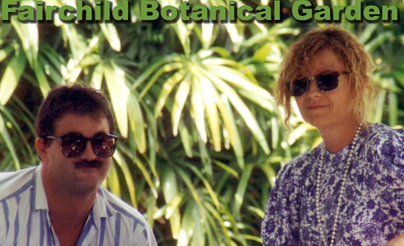
Thomas Lyttle was the publisher and editor of Psychedelic Monographs and Essays, a periodical that provided information to the counterculture at a time when mainstream publishing on the topic of illicit psychoactive drugs had slowed to a crawl. The first issue came out in the autumn of 1985, and the sixth and final issue appeared in 1993. PM&E evolved out of the newsletter the Psychozoic Press--An Informational Advisory and Communications Exchange Paper on Psychedelics, which first appeared in 1982. Editor Elvin D. Smith produced ten issues of the Psychozoic Press, and he continued to provide editorial input for PM&E until his death in 1988. Following the conclusion of Lyttle's run as an editor and publisher, he created a "best of" compilation using selections from PM&E, titled Psychedelics: A Collection of the Most Exciting New Material on Psychedelic Drugs. Published by Barricade Books Inc. in 1994, Psychedelics saw wider distribution than PM&E had seen. The final book Lyttle edited was Psychedelics Reimagined, which contained writings by folks like Timothy Leary, Hakim Bey, Otto Snow, Chris Bennett, John W. Allen, Jochen Gartz, yours truly, and others.
Lyttle was an early collector and producer of LSD blotter art. He conceived of asking psychedelic celebrities like Albert Hofmann and Timothy Leary to autograph undipped sheets of blotter. This action inspired increased interest of blotter as an art form. Signed blotter became highly collectible, with rare sheets selling for hundreds or thousands of dollars. Before his death, Lyttle donated some of his more valuable pieces of blotter art to the Multidisciplinary Association for Psychedelic Studies, and the sale of autographed blotter raised around $20,000 for MAPS.
Lyttle was an early collector and producer of LSD blotter art. He conceived of asking psychedelic celebrities like Albert Hofmann and Timothy Leary to autograph undipped sheets of blotter. This action inspired increased interest of blotter as an art form. Signed blotter became highly collectible, with rare sheets selling for hundreds or thousands of dollars. Before his death, Lyttle donated some of his more valuable pieces of blotter art to the Multidisciplinary Association for Psychedelic Studies, and the sale of autographed blotter raised around $20,000 for MAPS.
Dr. Stanley Krippner, Asklepia Foundation: Psychologist & Mentor
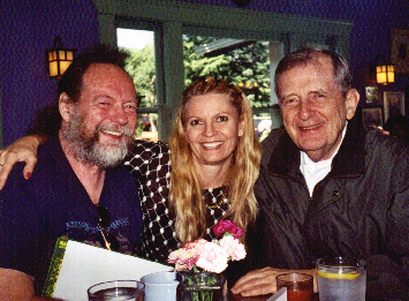
Early associate of MRU, Stanley Krippner, Ph.D., professor of psychology at Saybrook University, San Francisco, is a Fellow in four APA divisions, and past-president of two divisions (30 and 32). Formerly, he was director of the Kent State University Child Study Center, Kent OH, and the Maimonides Medical Center Dream Research Laboratory, in Brooklyn NY. He is co-author of Extraordinary Dreams (SUNY, 2002), The Mythic Path, 3rd ed. (Energy Psychology Press, 2006), and Haunted by Combat: Understanding PTSD in War Veterans (Greenwood, 2007), and co-editor of Healing Tales (Puente, 2007), Healing Stories (Puente, 2007), The Psychological Impact of War on Civilians: An International Perspective (Greenwood, 2003), Varieties of Anomalous Experience: Examining the Scientific Evidence (APA, 2000), and many other books.
Stanley has conducted workshops and seminars on dreams and/or hypnosis in Argentina, Brazil, Canada, China, Colombia, Cuba, Cyprus, Ecuador, Finland, France, Germany, Great Britain, Italy, Japan, Lithuania, Mexico, the Netherlands, Panama, the Philippines, Portugal, Puerto Rico, Russia, South Africa, Spain, Sweden, Venezuela, and at the last four congresses of the Interamerican Psychological Association. He is a member of the editorial board for the Journal of Indian Psychology and Revista Argentina de Psicologia Paranormal, and the advisory board for InternationalSchool for Psychotherapy, Counseling, and Group Leadership (St. Petersburg) and the Czech Unitaria (Prague). He holds faculty appointments at the Universidade Holistica Internacional (Brasilia) and the Instituto de Medicina y Tecnologia Avanzada de la Conducta (Ciudad Juarez). He has given invited addresses for the Chinese Academy of Sciences, the Russian Academy of Pedagogical Sciences, and the School for Diplomatic Studies, Montevideo, Uruguay. He is a Fellow of the Society for the Scientific Study of Religion, and has published cross-cultural studies on spiritual content in dreams.
Stanley has conducted workshops and seminars on dreams and/or hypnosis in Argentina, Brazil, Canada, China, Colombia, Cuba, Cyprus, Ecuador, Finland, France, Germany, Great Britain, Italy, Japan, Lithuania, Mexico, the Netherlands, Panama, the Philippines, Portugal, Puerto Rico, Russia, South Africa, Spain, Sweden, Venezuela, and at the last four congresses of the Interamerican Psychological Association. He is a member of the editorial board for the Journal of Indian Psychology and Revista Argentina de Psicologia Paranormal, and the advisory board for InternationalSchool for Psychotherapy, Counseling, and Group Leadership (St. Petersburg) and the Czech Unitaria (Prague). He holds faculty appointments at the Universidade Holistica Internacional (Brasilia) and the Instituto de Medicina y Tecnologia Avanzada de la Conducta (Ciudad Juarez). He has given invited addresses for the Chinese Academy of Sciences, the Russian Academy of Pedagogical Sciences, and the School for Diplomatic Studies, Montevideo, Uruguay. He is a Fellow of the Society for the Scientific Study of Religion, and has published cross-cultural studies on spiritual content in dreams.
Barry Hostetler - The Naked Dick: Actor/Director, Screen Writer & Private Eye
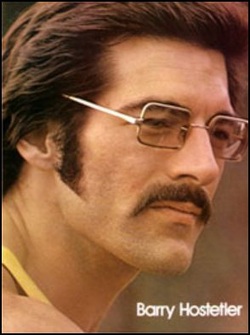
Barry Hostetler has been a world-class body-builder and trainer, a Hollywood actor, screenwriter, producer, and director who is currently a licensed private investigator. He has worked on capital crimes and such high profile cases as O.J. Simpson and Randy Weaver (Ruby Ridge). Over the years he has cultivated his mind as well as his body, using meditation and therapeutic techniques. Because he a Private Investigator and was the first nude model in Playgirl, we jokingly call him the double entende -- "The Naked Dick", a natural title for future memoirs.
Early in his modeling and film career Barry was also a world-class trainer at Vince's Gym in Hollywood. Vince Gironda's Gym was a modest, dark, old-fashioned kind of muscle factory out in the Valley, not far from the many Burbank studios. Not quite as famous as Gold's, Vince's Gym was established in 1948 by Vince Gironda, a bodybuilder known as the "Iron Guru". No fancy machines here, no music, just basic free-weights and hard training. The walls were lined with pictures of bodybuilders who have trained at Vince's over the years, including "Body by" Jake Steinman, Lou ("The Incredible Hulk") Ferrigno, and even Arnold ("The Terminator") Schwarzenegger.
Vince also helped the studios whip their stars into shape for the movies; he helped train the likes of Cher, Clint Eastwood, Denzel Washington, James Garner, Brian Keith, Robert Blake, Tommy Chong (of Cheech & Chong) and Erik Estrada. It is said that in the late 1960's, before bodybuilders started to use steroids, Vince's Gym produced more top physique stars than any other gym in the world. Stories about Vince and his gym are legendary and in Vince's gym, you either followed his methods or suffered his wrath. Gironda is often quoted as saying that bodybuilding is 85% nutrition. In fact, he was what some may call a health food nut. He was also an early proponent of low carb dieting, and recommended the use of numerous supplements, including desiccated liver tablets, kelp, digestive enzymes and glandulars such as adrenal and orchic. In certain circumstances Gironda would recommend up to 3 dozen fertile hen-eggs a day, along with raw (unhomogenized, unpasteurized) milk. Large amounts of fertile eggs, he said, is equal to the anabolic steroid Dianabol in effectiveness. He almost never provided supporting scientific evidence for his theories. Gironda is often quoted as saying that bodybuilding is 85% nutrition. In fact, he was what some may call a health food nut. He was also an early proponent of low carb dieting, and recommended the use of numerous supplements, including desiccated liver tablets, kelp, digestive enzymes and glandulars such as adrenal and orchic. In certain circumstances Gironda would recommend up to 3 dozen fertile hen-eggs a day, along with raw (unhomogenized, unpasteurized) milk. Large amounts of fertile eggs, he said, is equal to the anabolic steroid Dianabol in effectiveness. He almost never provided supporting scientific evidence for his theories.
Early in his modeling and film career Barry was also a world-class trainer at Vince's Gym in Hollywood. Vince Gironda's Gym was a modest, dark, old-fashioned kind of muscle factory out in the Valley, not far from the many Burbank studios. Not quite as famous as Gold's, Vince's Gym was established in 1948 by Vince Gironda, a bodybuilder known as the "Iron Guru". No fancy machines here, no music, just basic free-weights and hard training. The walls were lined with pictures of bodybuilders who have trained at Vince's over the years, including "Body by" Jake Steinman, Lou ("The Incredible Hulk") Ferrigno, and even Arnold ("The Terminator") Schwarzenegger.
Vince also helped the studios whip their stars into shape for the movies; he helped train the likes of Cher, Clint Eastwood, Denzel Washington, James Garner, Brian Keith, Robert Blake, Tommy Chong (of Cheech & Chong) and Erik Estrada. It is said that in the late 1960's, before bodybuilders started to use steroids, Vince's Gym produced more top physique stars than any other gym in the world. Stories about Vince and his gym are legendary and in Vince's gym, you either followed his methods or suffered his wrath. Gironda is often quoted as saying that bodybuilding is 85% nutrition. In fact, he was what some may call a health food nut. He was also an early proponent of low carb dieting, and recommended the use of numerous supplements, including desiccated liver tablets, kelp, digestive enzymes and glandulars such as adrenal and orchic. In certain circumstances Gironda would recommend up to 3 dozen fertile hen-eggs a day, along with raw (unhomogenized, unpasteurized) milk. Large amounts of fertile eggs, he said, is equal to the anabolic steroid Dianabol in effectiveness. He almost never provided supporting scientific evidence for his theories. Gironda is often quoted as saying that bodybuilding is 85% nutrition. In fact, he was what some may call a health food nut. He was also an early proponent of low carb dieting, and recommended the use of numerous supplements, including desiccated liver tablets, kelp, digestive enzymes and glandulars such as adrenal and orchic. In certain circumstances Gironda would recommend up to 3 dozen fertile hen-eggs a day, along with raw (unhomogenized, unpasteurized) milk. Large amounts of fertile eggs, he said, is equal to the anabolic steroid Dianabol in effectiveness. He almost never provided supporting scientific evidence for his theories.
Genesis P. Orridge, Radical Artist & Musician; Cultural Engineer
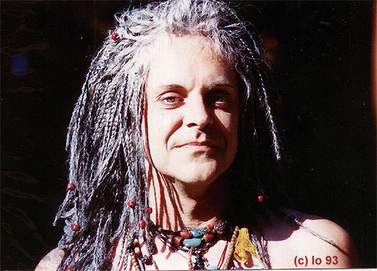
Genesis Breyer P-Orridge (born Neil Andrew Megson 22 February 1950) is an English singer-songwriter, musician, writer and artist. His early confrontational performance work in COUM Transmissions in the late 1960s and early 1970s along with the industrial band Throbbing Gristle, which dealt with subjects such as prostitution, pornography, serial killers, occultism and his own exploration of gender issues, generated controversy. Later musical work with Psychic TV received wider exposure, including some chart-topping singles. P-Orridge is credited on over 200 releases. In 1971, P-Orridge met William S. Burroughs after a brief correspondence. One of the most significant outcomes of these exchanges was Burroughs' introduction of P-Orridge to Brion Gysin.[4] Gysin would become a major influence upon P-Orridge's ideas and works and was his primary tutor in magic. (P-Orridge, 2003)
Genesis relocated to Brooklyn, New York City with his second wife, Lady Jaye, née Jacqueline Breyer, and began an ongoing experiment in body modification aimed at creating one pandrogynous being named "Genesis Breyer P-Orridge".[citation needed] Genesis P-Orridge received breast implants and began referring to himself as s/he. A book of GP-O writings, poems and observations, called Ooh, You Are Awful... But I Like You!, was published in Nepal[.In the mid-1990s, GP-O collaborated with different people in music, including Pigface, Skinny Puppy, and Download. GP-O also performed with Nik Turner and a reinvention of Hawkwind, a band with whom he'd shared bills in the early 1970s.
In June 1998, GP-O won a $1.5 million lawsuit against producer Rick Rubin and his American Recordings label for injuries he sustained while trying to escape a fire at Rubin's home in April 1995.[5] According to P-Orridge's attorney, David D. Stein, P-Orridge was staying at Rubin's home as a guest of Love and Rockets when the fire broke out. P-Orridge tried to escape the house by crawling through a second-story window and fell onto concrete stairs. P-Orridge suffered a broken wrist, broken ribs and a pulmonary embolism, as well as a shattered left elbow that will prevent him from playing guitar or keyboards, according to Stein. The jury found that the liability for the fire rested with Rubin and American Recordings and awarded P-Orridge $1,572,000 for his injuries.
In 1999, Genesis performed with the briefly reunited late 1980s' version of Psychic TV for an event at London's Royal Festival Hall, called Time's Up. This is also the title of the first CD by Thee Majesty, Genesis' spoken word project with noise guitarist Bryin Dall. The MC for the event, via pre-recorded video, was Quentin Crisp. A DVD was made of this event, which included the Master Musicians of Jajouka, Question Mark & the Mysterians, Billy Childish, and Thee Headcoats. The aforementioned Thee Majesty CD Time's Up was released by The Order of the Suffering Clown via World Serpent Distribution. Jaqueline Megson is credited as providing Point Of View, Bryin Dall for Frequency Of Truth and Genesis as Divination Of Word.
In December 2003, Genesis Breyer P-Orridge, calling himself Djinn, unveiled PTV3, a new act drawing upon the early "Hyperdelic" work of Psychic TV with media theorist Douglas Rushkoff among its members. On 16 May 2004 all four former members of Throbbing Gristle performed at the London Astoria for the first time in 23 years. Genesis P-Orridge appears in the 1998 film and 2000 book versions of Modulations, in the 1999 film Better Living Through Circuitry, in the 2004 film DiG!, the 2006 documentary Monks: The Transatlantic Feedback, and in Nik Sheehan's 2007 feature documentary on the Dreamachine entitled 'FLicKeR'.
On 11 October 2007, it was announced that Lady Jaye had died. This message was posted on the official Genesis P-Orridge website: "Genesis Breyer P-Orridge and her reactivated Psychic TV aka PTV3 are terribly sad to announce the cancellation of their November North American tour dates. This decision is entirely due to the unexpected passing of band member Lady Jaye Breyer P-Orridge. Lady Jaye died suddenly on Tuesday 9 October 2007 at home in Brooklyn, New York from a previously undiagnosed heart condition which is thought to have been connected with her long-term battle with stomach cancer. Lady Jaye collapsed and died in the arms of her heartbroken "other half" Genesis Breyer P-Orridge."[6] Psychic TV's current incarnation, PTV3, has recently released the new CD/DVD set, Mr. Alien Brain vs. The Skinwalkers. The album, which was released on 9 December 2008, was the first full length release since the death of Genesis' "other half". The two had previously embarked on a years-long pursuit of pandrogyny, undergoing painful plastic surgery procedures in order to become gender-neutral human beings that looked like each other[7].
We started out, because we were so crazy in love, just wanting to eat each other up, to become each other and become one. And as we did that, we started to see that it was affecting us in ways that we didn't expect. Really, we were just two parts of one whole; the pandrogyne was the whole and we were each other's other half. [8] On 04 November 2009, it was announced that Genesis Breyer P-Orridge is retiring from touring in any and all bands including Throbbing Gristle & Psychic TV to concentrate on art, writing and music. P-Orridge is now represented by the New York gallery, Invisible-Exports.
Genesis BREYER P-ORRIDGE is a true legend of the Anglo-American underground, an avant-garde anti-hero whose remarkable body of work reminds us that what is dangerous and what is important are never far apart—and that, when you believe something, artistic integrity demands that you live by it too. P-Orridge first achieved recognition with the 1969 founding of COUM Transmissions, a confrontational performance collective heavily influenced by Dada, which was later transformed into the band Throbbing Gristle. (P-Orridge would, in 1981, found the ground-breaking band, Psychic TV.) By the time COUM disbanded in 1976, it had helped push the boundaries and shatter the definitions of performance and contemporary art, paving the way for later transgressive work.
The culmination of COUM was the 1976 “Prostitution” exhibition at the ICA in London, which featured a stripper,used Tampax sculptures, repurposed pornography and transvestite guards, and caused such a commotion that the British Parliament reconsidered government funding for public art and labeled P-Orridge and h/er collaborators . “Wreckers of Civilization”.
In the early 1970s, P-Orridge met William S. Burroughs, who introduced h/er to Brion Gysin, marking the beginning of a seminal and influential collaborative relationship. Burroughs, under Gysin’s tutelage, repopularized the “cut-up ”technique of the early 20th century Surrealists, in which text, or narrative imagery, is cut up and re-organized, creating a new, non-linear formulation. The supremely Dadaist practice would influence P-Orridge throughout h/er career and remains an integral element of h/er work.
P-Orridge was an early participator in Fluxus and Mail Art, applying the theories of John Cage (upon which the foundations of Fluxus are built) on the pressed recording “Early Worm” in 1968, and exchanging works with Ray Johnson among others. Responding to P-Orridge’s Mail Art, the British General Post Office charged h/er in 1976 with sending “indecent and offensive material” through the mail, including desecrated images of the Queen. Like many artists at this time, P-Orridge rejected market-driven work, choosing instead to maintain an artist-centered creative nucleus in which work was shared within a community, and was never intended to enter the commercialized art world. P-Orridge later began an occultist practice influenced by the theories of the artist Austin Osman Spare. The “sigils” they performed explored the relationship between the conscious and unconscious self through magical techniques such as automatic writing, drawing and actions, relics of which can be found in many of P-Orridge’s collage work.
In the 1990s, P-Orridge began a collaboration with the performance artist Lady Jaye Breyer, which focused on a single, central concern—deconstructing the fiction of self. Influenced again by “cut-up” techniques and frustrated by what they felt to be imposed limits on personal and expressive identity and on the language of true love, P-Orridge and Lady Jaye applied the strategy of “cutting-up” to their own bodies, in an effort to merge their two identities, through plastic surgery, hormone therapy, cross-dressing and altered behavior, into a single, “pandrogynous” character, “BREYER P-ORRIDGE".They embraced a painterly, gestural approach to their own bodies, making expressive and startling use of signifiers like eyebrows, lips, and breasts, in order to resemble one another as much as possible. The work was an exercise in elective, creative identity, and a test of how fully two people could integrate their own lives, bodies, and consciousnesses, a symbolic gesture towards evolution and true union. Although Lady Jaye passed away in 2007, the project continues with Genesis embodying the entirety of BREYER P-ORRIDGE. Genesis P-Orridge and BREYER P-ORRIDGE have exhibited internationally, including recent exhibitions at Deitch Projects, Mass MOCA, Centre Pompidou, Contemporary Art Museum St. Louis, Barbican Museum, the Swiss Institute and White Columns, amongst others. Work was recently acquired for the permanent collection of the Tate Britain.
Genesis relocated to Brooklyn, New York City with his second wife, Lady Jaye, née Jacqueline Breyer, and began an ongoing experiment in body modification aimed at creating one pandrogynous being named "Genesis Breyer P-Orridge".[citation needed] Genesis P-Orridge received breast implants and began referring to himself as s/he. A book of GP-O writings, poems and observations, called Ooh, You Are Awful... But I Like You!, was published in Nepal[.In the mid-1990s, GP-O collaborated with different people in music, including Pigface, Skinny Puppy, and Download. GP-O also performed with Nik Turner and a reinvention of Hawkwind, a band with whom he'd shared bills in the early 1970s.
In June 1998, GP-O won a $1.5 million lawsuit against producer Rick Rubin and his American Recordings label for injuries he sustained while trying to escape a fire at Rubin's home in April 1995.[5] According to P-Orridge's attorney, David D. Stein, P-Orridge was staying at Rubin's home as a guest of Love and Rockets when the fire broke out. P-Orridge tried to escape the house by crawling through a second-story window and fell onto concrete stairs. P-Orridge suffered a broken wrist, broken ribs and a pulmonary embolism, as well as a shattered left elbow that will prevent him from playing guitar or keyboards, according to Stein. The jury found that the liability for the fire rested with Rubin and American Recordings and awarded P-Orridge $1,572,000 for his injuries.
In 1999, Genesis performed with the briefly reunited late 1980s' version of Psychic TV for an event at London's Royal Festival Hall, called Time's Up. This is also the title of the first CD by Thee Majesty, Genesis' spoken word project with noise guitarist Bryin Dall. The MC for the event, via pre-recorded video, was Quentin Crisp. A DVD was made of this event, which included the Master Musicians of Jajouka, Question Mark & the Mysterians, Billy Childish, and Thee Headcoats. The aforementioned Thee Majesty CD Time's Up was released by The Order of the Suffering Clown via World Serpent Distribution. Jaqueline Megson is credited as providing Point Of View, Bryin Dall for Frequency Of Truth and Genesis as Divination Of Word.
In December 2003, Genesis Breyer P-Orridge, calling himself Djinn, unveiled PTV3, a new act drawing upon the early "Hyperdelic" work of Psychic TV with media theorist Douglas Rushkoff among its members. On 16 May 2004 all four former members of Throbbing Gristle performed at the London Astoria for the first time in 23 years. Genesis P-Orridge appears in the 1998 film and 2000 book versions of Modulations, in the 1999 film Better Living Through Circuitry, in the 2004 film DiG!, the 2006 documentary Monks: The Transatlantic Feedback, and in Nik Sheehan's 2007 feature documentary on the Dreamachine entitled 'FLicKeR'.
On 11 October 2007, it was announced that Lady Jaye had died. This message was posted on the official Genesis P-Orridge website: "Genesis Breyer P-Orridge and her reactivated Psychic TV aka PTV3 are terribly sad to announce the cancellation of their November North American tour dates. This decision is entirely due to the unexpected passing of band member Lady Jaye Breyer P-Orridge. Lady Jaye died suddenly on Tuesday 9 October 2007 at home in Brooklyn, New York from a previously undiagnosed heart condition which is thought to have been connected with her long-term battle with stomach cancer. Lady Jaye collapsed and died in the arms of her heartbroken "other half" Genesis Breyer P-Orridge."[6] Psychic TV's current incarnation, PTV3, has recently released the new CD/DVD set, Mr. Alien Brain vs. The Skinwalkers. The album, which was released on 9 December 2008, was the first full length release since the death of Genesis' "other half". The two had previously embarked on a years-long pursuit of pandrogyny, undergoing painful plastic surgery procedures in order to become gender-neutral human beings that looked like each other[7].
We started out, because we were so crazy in love, just wanting to eat each other up, to become each other and become one. And as we did that, we started to see that it was affecting us in ways that we didn't expect. Really, we were just two parts of one whole; the pandrogyne was the whole and we were each other's other half. [8] On 04 November 2009, it was announced that Genesis Breyer P-Orridge is retiring from touring in any and all bands including Throbbing Gristle & Psychic TV to concentrate on art, writing and music. P-Orridge is now represented by the New York gallery, Invisible-Exports.
Genesis BREYER P-ORRIDGE is a true legend of the Anglo-American underground, an avant-garde anti-hero whose remarkable body of work reminds us that what is dangerous and what is important are never far apart—and that, when you believe something, artistic integrity demands that you live by it too. P-Orridge first achieved recognition with the 1969 founding of COUM Transmissions, a confrontational performance collective heavily influenced by Dada, which was later transformed into the band Throbbing Gristle. (P-Orridge would, in 1981, found the ground-breaking band, Psychic TV.) By the time COUM disbanded in 1976, it had helped push the boundaries and shatter the definitions of performance and contemporary art, paving the way for later transgressive work.
The culmination of COUM was the 1976 “Prostitution” exhibition at the ICA in London, which featured a stripper,used Tampax sculptures, repurposed pornography and transvestite guards, and caused such a commotion that the British Parliament reconsidered government funding for public art and labeled P-Orridge and h/er collaborators . “Wreckers of Civilization”.
In the early 1970s, P-Orridge met William S. Burroughs, who introduced h/er to Brion Gysin, marking the beginning of a seminal and influential collaborative relationship. Burroughs, under Gysin’s tutelage, repopularized the “cut-up ”technique of the early 20th century Surrealists, in which text, or narrative imagery, is cut up and re-organized, creating a new, non-linear formulation. The supremely Dadaist practice would influence P-Orridge throughout h/er career and remains an integral element of h/er work.
P-Orridge was an early participator in Fluxus and Mail Art, applying the theories of John Cage (upon which the foundations of Fluxus are built) on the pressed recording “Early Worm” in 1968, and exchanging works with Ray Johnson among others. Responding to P-Orridge’s Mail Art, the British General Post Office charged h/er in 1976 with sending “indecent and offensive material” through the mail, including desecrated images of the Queen. Like many artists at this time, P-Orridge rejected market-driven work, choosing instead to maintain an artist-centered creative nucleus in which work was shared within a community, and was never intended to enter the commercialized art world. P-Orridge later began an occultist practice influenced by the theories of the artist Austin Osman Spare. The “sigils” they performed explored the relationship between the conscious and unconscious self through magical techniques such as automatic writing, drawing and actions, relics of which can be found in many of P-Orridge’s collage work.
In the 1990s, P-Orridge began a collaboration with the performance artist Lady Jaye Breyer, which focused on a single, central concern—deconstructing the fiction of self. Influenced again by “cut-up” techniques and frustrated by what they felt to be imposed limits on personal and expressive identity and on the language of true love, P-Orridge and Lady Jaye applied the strategy of “cutting-up” to their own bodies, in an effort to merge their two identities, through plastic surgery, hormone therapy, cross-dressing and altered behavior, into a single, “pandrogynous” character, “BREYER P-ORRIDGE".They embraced a painterly, gestural approach to their own bodies, making expressive and startling use of signifiers like eyebrows, lips, and breasts, in order to resemble one another as much as possible. The work was an exercise in elective, creative identity, and a test of how fully two people could integrate their own lives, bodies, and consciousnesses, a symbolic gesture towards evolution and true union. Although Lady Jaye passed away in 2007, the project continues with Genesis embodying the entirety of BREYER P-ORRIDGE. Genesis P-Orridge and BREYER P-ORRIDGE have exhibited internationally, including recent exhibitions at Deitch Projects, Mass MOCA, Centre Pompidou, Contemporary Art Museum St. Louis, Barbican Museum, the Swiss Institute and White Columns, amongst others. Work was recently acquired for the permanent collection of the Tate Britain.
Laurence Gartel: Digital Fine Art Pioneer
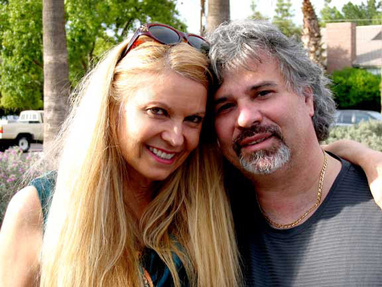
Laurence Gartel (born June 5, 1956) is an American artist. His work has been exhibited at the Museum of Modern Art, USA, Joan Whitney Payson Museum, Long Beach Museum of Art, Princeton Art Museum, PS 1, Norton Museum and in the permanent collections of the Smithsonian Institution's Museum of American History and the Bibliothèque Nationale. Born and raised in New York City, Gartel had the opportunity to teach Andy Warhol how to use the Amiga Computer, went to School of Visual Arts[1], with fellow art student, graffiti artist Keith Haring, where he earned his BFA degree majoring in Graphics, and started his electronic career working side by side with Nam June Paik at Media Study/Buffalo in upstate New York. Gartel had many associations with musicians such as Debbie Harry (Blondie) Sid Vicious (Sex Pistols), Stiv Bators (Dead Boys) Johnny Thunders (New York Dolls), Ace Frehley (Kiss) and Wendy O Williams (Plasmatics). Gartel has created artwork for such Pop Culture stars such as Justin Timberlake and Britney Spears.
One of Gartel's most memorable campaigns was the one he designed for Absolut Vodka in 1990, joining world famous artists such as painter Andy Warhol and glass artist Hans Godo Frabel. ABSOLUT GARTEL is considered to be the first digital art ad ever created for the legendary Absolut Vodka advertising campaign which can be found in the publication ABSOLUT BOOK by Richard Lewis.[2] For more info, see the Absolut Vodka Artists website His biography is included in "Who's Who", "Who's Who in the East", "Who's Who in America", "Who's Who in American Art", and "Who's Who in the World."
One of Gartel's most memorable campaigns was the one he designed for Absolut Vodka in 1990, joining world famous artists such as painter Andy Warhol and glass artist Hans Godo Frabel. ABSOLUT GARTEL is considered to be the first digital art ad ever created for the legendary Absolut Vodka advertising campaign which can be found in the publication ABSOLUT BOOK by Richard Lewis.[2] For more info, see the Absolut Vodka Artists website His biography is included in "Who's Who", "Who's Who in the East", "Who's Who in America", "Who's Who in American Art", and "Who's Who in the World."
Bob Dobbs: Marshall McLuhan Archivist & Paramedia Ecologist
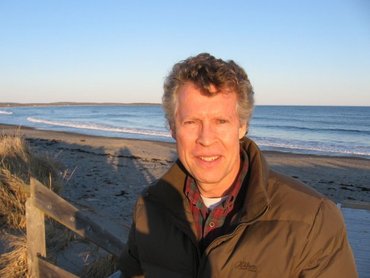
Robert (Bob) Dobbs (born February 2, 1922, in Paris) is a paramedia ecologist, author, poet, politician, lecturer, and the inspiration for the J. R. "Bob" Dobbs character of the Church of the SubGenius. His father was a member of the Priory of Sion and his family worked as servants for the powerful aristocratic families of Europe for generations. Through his father's connections to these families, Dobbs became active in key international intelligence agencies after World War II. In the early 1960's, initially assigned to monitor and sabotage the work of Marshall McLuhan, Dobbs ended up becoming a promoter and archivist of McLuhan's project.
Dobbs co-hosted with Myke Dyer a whistle-blowing radio show on CKLN in Toronto from 1987 to 1991 where he exposed his former colleagues in the intelligence community, members of a secret governing body he referred to as "The Secret Council of Ten". In 1992, early McLuhan students, Nelson Thall and Dave Newfeld of Time Again Productions, released Bob's Media Ecology and Bob's Media Ecology Squared--two albums of sound bites from Dobbs' radio show. Dobbs' insights are most accurately portrayed in his 1992 book, "Phatic Communion with Bob Dobbs".
In the Winter 2000 edition (Issue #22) of Paranoia Magazine, Robert Guffey draws several parallels between the themes in The Matrix and the life of Bob Dobbs, suggesting that the movie is based on his life and insights. Three years later, after the complete Matrix trilogy is released and seems to confirm Dobbs' projections, Guffey did a follow-up interview with Dobbs which is posted at the website for Paranoia Magazine. Dobbs now does lectures and TV and radio appearances on paramedia ecology, the significance of the work of Marshall McLuhan and Finnegans Wake, and humanity's triumph over the Android Meme, which is an "automated self-replicating unit of cultural transmission; machines communicating with machines" (from androidmeme.com). Highlights from Dobbs' 2005 Los Angeles lecture tour are featured in Eli Elliott's documentary Def Con Bob. In 2005, archived episodes from Dobbs' radio shows began to be rebroadcast on CKLN's International Connection. Dobbs has been carrying on a dialogue with his students through his discussion forum at FiveBodied.com since 2005.
Dobbs co-hosted with Myke Dyer a whistle-blowing radio show on CKLN in Toronto from 1987 to 1991 where he exposed his former colleagues in the intelligence community, members of a secret governing body he referred to as "The Secret Council of Ten". In 1992, early McLuhan students, Nelson Thall and Dave Newfeld of Time Again Productions, released Bob's Media Ecology and Bob's Media Ecology Squared--two albums of sound bites from Dobbs' radio show. Dobbs' insights are most accurately portrayed in his 1992 book, "Phatic Communion with Bob Dobbs".
In the Winter 2000 edition (Issue #22) of Paranoia Magazine, Robert Guffey draws several parallels between the themes in The Matrix and the life of Bob Dobbs, suggesting that the movie is based on his life and insights. Three years later, after the complete Matrix trilogy is released and seems to confirm Dobbs' projections, Guffey did a follow-up interview with Dobbs which is posted at the website for Paranoia Magazine. Dobbs now does lectures and TV and radio appearances on paramedia ecology, the significance of the work of Marshall McLuhan and Finnegans Wake, and humanity's triumph over the Android Meme, which is an "automated self-replicating unit of cultural transmission; machines communicating with machines" (from androidmeme.com). Highlights from Dobbs' 2005 Los Angeles lecture tour are featured in Eli Elliott's documentary Def Con Bob. In 2005, archived episodes from Dobbs' radio shows began to be rebroadcast on CKLN's International Connection. Dobbs has been carrying on a dialogue with his students through his discussion forum at FiveBodied.com since 2005.
Neal Goldsmith, PhD: Psychologist & Activist
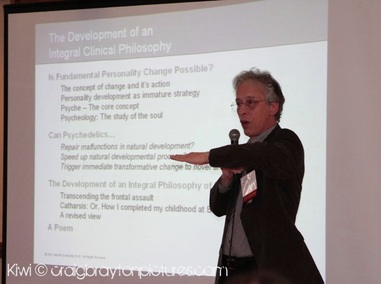
Neal M. Goldsmith, Ph.D. is a psychotherapist specializing in psychospiritual development and resistance to change. Seeing “neurosis” as the natural unfolding of human maturation, he views psychology as the science of personal emergence and spiritual maturity. With the exception of biologically-based diseases, such as schizophrenia, psychology is not about “mental illness” and so Dr. Goldsmith treats “neurosis” as spiritual immaturity, not pathology. In fact, he believes the “sick” label itself tightens and distorts, actually slowing healthy realignment. Dr. Goldsmith applies innovative techniques drawn from many schools of thought and traditional practices, such as Psychosynthesis, Imago Relationship Therapy, regressive psychotherapies, Rogerian client-centered counseling, yoga psychology, and other humanistic, transpersonal and eastern traditions. He facilitates deep life review, awakening to personal history, and life planning, with a special focus on existential and midlife crisis and with young adults suffering from lack of direction or substance abuse. Dr. Goldsmith is particularly helpful with couples – many feeling “in-love” again after years of vicious cycles.
Dr. Goldsmith has a master’s degree in counseling from New York University and a Ph.D. in psychology from Claremont Graduate University, with an orientation toward “action science” in the tradition of Kurt Lewin. Dr. Goldsmith conducted his dissertation research, on the factors that facilitate or inhibit the successful utilization of mental health policy research, as a federally-funded doctoral research assistant at Princeton University. He was also deputy principal investigator of this four-year, nation-wide study of mental health policy research utilization. Author of dozens of popular and scholarly articles, Dr. Goldsmith is a frequent speaker on spiritual emergence, resistance to change, transpersonal psychology, drug policy reform and the post-modern future of society. He has worked to improve the innovation process and facilitate the management of change, for companies such as American Express, AT&T and Gartner.
Dr. Goldsmith has a master’s degree in counseling from New York University and a Ph.D. in psychology from Claremont Graduate University, with an orientation toward “action science” in the tradition of Kurt Lewin. Dr. Goldsmith conducted his dissertation research, on the factors that facilitate or inhibit the successful utilization of mental health policy research, as a federally-funded doctoral research assistant at Princeton University. He was also deputy principal investigator of this four-year, nation-wide study of mental health policy research utilization. Author of dozens of popular and scholarly articles, Dr. Goldsmith is a frequent speaker on spiritual emergence, resistance to change, transpersonal psychology, drug policy reform and the post-modern future of society. He has worked to improve the innovation process and facilitate the management of change, for companies such as American Express, AT&T and Gartner.
Dr. Marshall Gilula: M.D. & Distance Healer
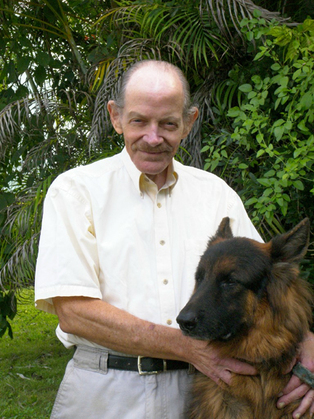
Passed 7/2011. The very first Motoyama-Bentov Fellow was Dr. Marshall Gilula, a Neuropsychiatrist with a specialty in EEG. Over the years, Dr. Gilula has employed both soft and hard technologies in his healing practice. He was a pioneer in CES, which is now known as Transcranial Electrical Stimulation, which is an active method of driving brainwaves into coherence and synchrony, now widely accepted in the conventional medical world. AlphaStim, etc…..
"I am a board certified Psychiatrist also board certified in the Neurological subspecialty of Electroencephalography (EEG), or "Brain Waves." The music you heard at the Splash Page and in the Dr Tomorrow section is from a MIDI file composed and partially produced by me in a recording studio I have built in Miami. My undergraduate degree in History & Science was earned at Harvard College, and I have worked in Moscow while I was a medical student at the University of Missouri and later as a US-USSR Exchange Scientist for NIMH in 1978. I was the Editor of the Journal of Holistic Medicine (Human Sciences Press) for a year and have been an avid member of the American Medical Jogger's Association and the Dead Runners Society. NeXT Computer, Inc. gave me the opportunity to study NEXTSTEP and become a NeXT Registered Developer at their Redwood City Developer Camp in 1990. The insanely great machine, Steve Jobs, and a fine operating system have done much more for me than all the products of Microsoft combined."
Dr. Gilula's active clinical expertise includes forensic psychiatry, outpatient psychiatry (primarily psychotherapy), epilepsy and clinical EEG. Outpatient psychotherapy is combined with biofeedback, hypnosis, meditation, and the use of cybernetic techniques that include cranial electrotherapy stimulation (CES) and many different forms of biofeedback. His biofeedback armamentarius includes EKG-HRV (heart rate variability) and the EPFX (ElectroPhysiological Feedback Xrroid).He is a board certified Biofeedback Instructor and a Neurotherapy Instructor. His research emphasis in neurology is focused on active use of consciousness in healing, the treatment of Parkinsonism, demyelinating disease, and chronic pain. From 2004 through 2006, he was a Senior Patient Safety Fellow at the Miami Center for Patient Safety at Jackson Memorial Hospital and the University of Miami Miller School of Medicine.
DR. MARSHALL F. GILULA, Miami, Fla. is an MD and musician with extensive training and experience in both Psychiatry and Neurology as well as Neurophysiology (EEG). He has taught both Psychiatry and Neurology to medical students and housestaff, and was the first listed editor of the Journal of Holistic Medicine that was published by Human Sciences Press. Dr. Gilula has had extensive experience in complementary and alternative medicine (CAM) and owns a small recording studio in Miami, where he has produced the CYBERDOCtv music and other compositions. His exemplar project is a DVD for Dissonance Resolution Meditation, using unique psychoactive symbolism and musical resonance effects.
Life Energies Research Institute, Inc. (LERI) is a non-profit research foundation which operated under the direction of Marshall F. Gilula, M.D. since 1970. Dr. Gilula is a board-certified psychiatrist, a board certified neurological subspecialist (Neurophysiology/EEG), and a diplomate in Biofeedback Therapy, and a certified Instructor in Neurotherapy and Biofeedback.
His research experience includes being a US-USSR International Exchange Scientist in 1978 (Moscow) and receiving the 1981 (Tokyo) Motoyama-Ben Tov Award. Dr. Gilula became a NeXT Registered Developer in 1990. He has been a member of the Scientific Advisory Board of the Institute of Hearthmath. His private research in Miami involves psychiatry, EEG, and research neurology within a framework of complementary and alternative medicine. Since 1999, he has been at the University of Miami/Jackson Memorial Hospital for over three years in the Neurology Department (Epilepsy/EEG Fellow) and two years in the Anesthesiology Department, UM-JMH Center for Patient Safety.
Beginning in December 2004, he has investigated the EPFX-QXCI-SCIO cybernetic technology. At the University of Miami, he has studied Cerebral Electrotherapy Stimulation (CES) as a safer alternative to medications for anxiety and depression. He also is interested in the psychosocial aspects of epilepsy, noninvasive neuromedical approaches to the comorbid depression found in epilepsy and chronic pain patients, and noninvasive, safe cybernetic technologies that may one day overshadow many current methods of diagnosis and treatment for ultimate healing.
"I am a board certified Psychiatrist also board certified in the Neurological subspecialty of Electroencephalography (EEG), or "Brain Waves." The music you heard at the Splash Page and in the Dr Tomorrow section is from a MIDI file composed and partially produced by me in a recording studio I have built in Miami. My undergraduate degree in History & Science was earned at Harvard College, and I have worked in Moscow while I was a medical student at the University of Missouri and later as a US-USSR Exchange Scientist for NIMH in 1978. I was the Editor of the Journal of Holistic Medicine (Human Sciences Press) for a year and have been an avid member of the American Medical Jogger's Association and the Dead Runners Society. NeXT Computer, Inc. gave me the opportunity to study NEXTSTEP and become a NeXT Registered Developer at their Redwood City Developer Camp in 1990. The insanely great machine, Steve Jobs, and a fine operating system have done much more for me than all the products of Microsoft combined."
Dr. Gilula's active clinical expertise includes forensic psychiatry, outpatient psychiatry (primarily psychotherapy), epilepsy and clinical EEG. Outpatient psychotherapy is combined with biofeedback, hypnosis, meditation, and the use of cybernetic techniques that include cranial electrotherapy stimulation (CES) and many different forms of biofeedback. His biofeedback armamentarius includes EKG-HRV (heart rate variability) and the EPFX (ElectroPhysiological Feedback Xrroid).He is a board certified Biofeedback Instructor and a Neurotherapy Instructor. His research emphasis in neurology is focused on active use of consciousness in healing, the treatment of Parkinsonism, demyelinating disease, and chronic pain. From 2004 through 2006, he was a Senior Patient Safety Fellow at the Miami Center for Patient Safety at Jackson Memorial Hospital and the University of Miami Miller School of Medicine.
DR. MARSHALL F. GILULA, Miami, Fla. is an MD and musician with extensive training and experience in both Psychiatry and Neurology as well as Neurophysiology (EEG). He has taught both Psychiatry and Neurology to medical students and housestaff, and was the first listed editor of the Journal of Holistic Medicine that was published by Human Sciences Press. Dr. Gilula has had extensive experience in complementary and alternative medicine (CAM) and owns a small recording studio in Miami, where he has produced the CYBERDOCtv music and other compositions. His exemplar project is a DVD for Dissonance Resolution Meditation, using unique psychoactive symbolism and musical resonance effects.
Life Energies Research Institute, Inc. (LERI) is a non-profit research foundation which operated under the direction of Marshall F. Gilula, M.D. since 1970. Dr. Gilula is a board-certified psychiatrist, a board certified neurological subspecialist (Neurophysiology/EEG), and a diplomate in Biofeedback Therapy, and a certified Instructor in Neurotherapy and Biofeedback.
His research experience includes being a US-USSR International Exchange Scientist in 1978 (Moscow) and receiving the 1981 (Tokyo) Motoyama-Ben Tov Award. Dr. Gilula became a NeXT Registered Developer in 1990. He has been a member of the Scientific Advisory Board of the Institute of Hearthmath. His private research in Miami involves psychiatry, EEG, and research neurology within a framework of complementary and alternative medicine. Since 1999, he has been at the University of Miami/Jackson Memorial Hospital for over three years in the Neurology Department (Epilepsy/EEG Fellow) and two years in the Anesthesiology Department, UM-JMH Center for Patient Safety.
Beginning in December 2004, he has investigated the EPFX-QXCI-SCIO cybernetic technology. At the University of Miami, he has studied Cerebral Electrotherapy Stimulation (CES) as a safer alternative to medications for anxiety and depression. He also is interested in the psychosocial aspects of epilepsy, noninvasive neuromedical approaches to the comorbid depression found in epilepsy and chronic pain patients, and noninvasive, safe cybernetic technologies that may one day overshadow many current methods of diagnosis and treatment for ultimate healing.
Sir Laurence Gardner: Author & Dragon Lineage [deceased]
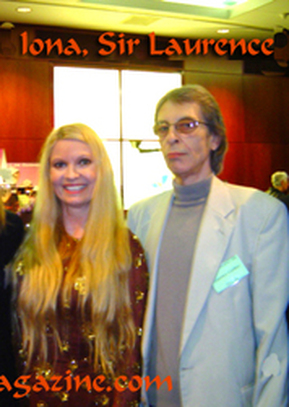
Laurence Gardner's first book Bloodline of the Holy Grail was published in 1996. The book was serialized in the Daily Mail and a best seller.[1] He used his books to propose several theories, including a belief that Jesus and Mary Magdalene had married and had children, who later included King Arthur and the House Of Stuart.[1] In Lost Secrets of the Sacred Ark he claimed that the Ark of the Covenant was a machine for manufacturing "monatomic gold" - a supposed elixir which could be used to extend life.[2] His books also included theories about Freemasonry, the Knights Templar, The Holy Grail and proposed connections between Atenism and Judaism.
Gardner described himself as "Chevalier Labhran de Saint Germain", and "Presidential Attache to the European Council of Princes" also "Prior of the Celtic Churches Sacred Kindred of Saint Columbia".[3] He also claimed to be Jacobite Historiographer Royal of the Royal House of Stewart. He was a supporter of Michael Lafosse, in particular his claims to be descended from the House of Stuart, which Gardner claimed was descended from Jesus Christ.[4][5] Historians and scholars regard him as a conspiracy theorist,[6] and treat his work as pseudohistory.[4] Michel Lafosse's claims have been dismissed. [7] Laurence Gardner was also known in the United States for his radio phone-ins.[1] It was announced on his personal website that he had died on 12 August 2010 after a prolonged illness.[8]
Bibliography
Gardner described himself as "Chevalier Labhran de Saint Germain", and "Presidential Attache to the European Council of Princes" also "Prior of the Celtic Churches Sacred Kindred of Saint Columbia".[3] He also claimed to be Jacobite Historiographer Royal of the Royal House of Stewart. He was a supporter of Michael Lafosse, in particular his claims to be descended from the House of Stuart, which Gardner claimed was descended from Jesus Christ.[4][5] Historians and scholars regard him as a conspiracy theorist,[6] and treat his work as pseudohistory.[4] Michel Lafosse's claims have been dismissed. [7] Laurence Gardner was also known in the United States for his radio phone-ins.[1] It was announced on his personal website that he had died on 12 August 2010 after a prolonged illness.[8]
Bibliography
- Bloodline of The Holy Grail: The Hidden Lineage of Jesus Revealed (1996) (ISBN 1852308702)
- Genesis of the Grail Kings: The Astonishing Story of the Ancient Bloodline of Christ and the True Heritage of the Holy Grail (1999) (ISBN 0553817744)
- Illustrated Bloodline of the Holy Grail (2000) (ISBN 1862047707)
- Realm of The Ring Lords: The Ancient Legacy of the Ring and the Grail (2003) (ISBN 1931412146)
- Lost Secrets of the Sacred Ark: Amazing Revelations of the Incredible Power of Gold (2004) (ISBN 0007142951)
- The Magdalene Legacy: The Jesus and Mary Bloodline Conspiracy (2005) (ISBN 0007200854)
- The Shadow of Solomon: The Lost Secret of the Freemasons Revealed (2005) (ISBN 1578634040)
- The Grail Enigma: The Hidden Heirs of Jesus and Mary Magdalene (2008) (ISBN 0007266944)
Jim Marrs: Investigative Journalist
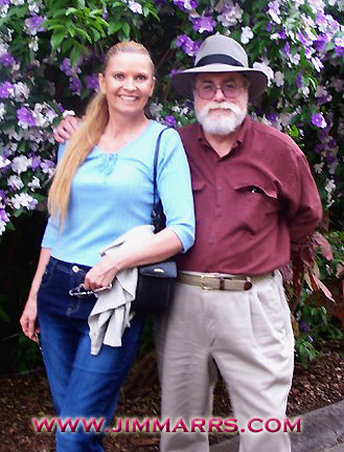
Jim Marrs (born 5 December 1943) is an American former newspaper journalist and author of books and articles on a wide range of alleged cover ups and conspiracies.[1] Marrs is a prominent figure in the JFK conspiracy press and his book Crossfire was a source for Oliver Stone's film JFK. He has written books asserting the existence of government conspiracies regarding aliens, 9/11, telepathy, and secret societies. He was once a news reporter in the Dallas–Fort Worth Metroplex and has taught a class on the Kennedy Assassination at University of Texas at Arlington. Marrs is a member of the Scholars for 9/11 Truth. Since 1980, Marrs has been a free-lance writer, author, and public relations consultant. He has also published a rural weekly newspaper along with a monthly tourism tabloid, a cable television show, and several videos.(Who's Who, Ibid.)
Since 1976, Marrs has taught a course on the assassination of President John F. Kennedy at the University of Texas at Arlington.[2] In 1989, his book, Crossfire: The Plot That Killed Kennedy, was published and reached the New York Times Paperback Non-Fiction Best Seller list in mid-February 1992.[2] It became a basis for the Oliver Stone film JFK. Marrs served as a chief consultant for both the film's screenplay and production.(Who's Who, Ibid.)
Beginning in 1992, Marrs spent three years researching and completing a non-fiction book on a top-secret government program called the Stargate Project involving the psychic phenomenon known as remote viewing, only to have the program canceled as it was going to press in the summer of 1995. Within two months, the story of military-developed remote viewing broke nationally in the Washington Post after the CIA revealed the program.(Who's Who, Ibid.) In May 1997, Marrs' investigation of UFOs, Alien Agenda, was published by HarperCollins Publishers. Publishers Weekly described Alien Agenda as "the most entertaining and complete overview of flying saucers and their crew in years". The paperback edition was released in mid-1998. It has been translated into several foreign languages and become the top-selling UFO book in the world.(Who's Who, Ibid.)
In early 2000, HarperCollins published Rule by Secrecy, which claimed to trace a hidden history connecting modern secret societies to ancient and medieval times. This book also reached the New York Times Best Seller list. In 2003, his book The War on Freedom probed the alleged conspiracies of the 9/11 attacks and their aftermath. It was released in 2006 under the title The Terror Conspiracy.(Who's Who, Ibid.) Marrs has been a featured speaker at a number of national conferences including the annual International UFO Congress[5] and the annual Gulf Breeze UFO Conference,[6] but he also speaks at local conferences, such as Conspiracy Con[7] and The Bay Area UFO Expo.[8] Beginning in 2000, he began teaching a course on UFOs at the University of Texas at Arlington.(Who's Who, Ibid.) Marrs has appeared on ABC, NBC, CBS, CNN, C-SPAN, The Discovery Channel, TLC, The History Channel, This Morning America[, Geraldo, The Montel Williams Show, Today, TechTV, Larry King (with George Noory), and Art Bell radio programs, as well as numerous national and regional radio and TV shows.(Who's Who, Ibid.)
Since 1976, Marrs has taught a course on the assassination of President John F. Kennedy at the University of Texas at Arlington.[2] In 1989, his book, Crossfire: The Plot That Killed Kennedy, was published and reached the New York Times Paperback Non-Fiction Best Seller list in mid-February 1992.[2] It became a basis for the Oliver Stone film JFK. Marrs served as a chief consultant for both the film's screenplay and production.(Who's Who, Ibid.)
Beginning in 1992, Marrs spent three years researching and completing a non-fiction book on a top-secret government program called the Stargate Project involving the psychic phenomenon known as remote viewing, only to have the program canceled as it was going to press in the summer of 1995. Within two months, the story of military-developed remote viewing broke nationally in the Washington Post after the CIA revealed the program.(Who's Who, Ibid.) In May 1997, Marrs' investigation of UFOs, Alien Agenda, was published by HarperCollins Publishers. Publishers Weekly described Alien Agenda as "the most entertaining and complete overview of flying saucers and their crew in years". The paperback edition was released in mid-1998. It has been translated into several foreign languages and become the top-selling UFO book in the world.(Who's Who, Ibid.)
In early 2000, HarperCollins published Rule by Secrecy, which claimed to trace a hidden history connecting modern secret societies to ancient and medieval times. This book also reached the New York Times Best Seller list. In 2003, his book The War on Freedom probed the alleged conspiracies of the 9/11 attacks and their aftermath. It was released in 2006 under the title The Terror Conspiracy.(Who's Who, Ibid.) Marrs has been a featured speaker at a number of national conferences including the annual International UFO Congress[5] and the annual Gulf Breeze UFO Conference,[6] but he also speaks at local conferences, such as Conspiracy Con[7] and The Bay Area UFO Expo.[8] Beginning in 2000, he began teaching a course on UFOs at the University of Texas at Arlington.(Who's Who, Ibid.) Marrs has appeared on ABC, NBC, CBS, CNN, C-SPAN, The Discovery Channel, TLC, The History Channel, This Morning America[, Geraldo, The Montel Williams Show, Today, TechTV, Larry King (with George Noory), and Art Bell radio programs, as well as numerous national and regional radio and TV shows.(Who's Who, Ibid.)
Duncan Roads: Nexus Editor & Activist
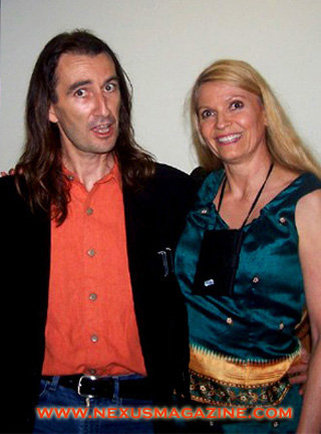
Nexus is a bi-monthly alternative news magazine. It covers geopolitics and conspiracy theories; health issues, including alternative medicine; future science; the unexplained, including UFOs; Big Brother; and historical revisionism. The magazine also publishes articles about freedom of speech and thought, and related issues. It is owned and edited by Duncan Roads.
Tom Bearden: Zero Point Energy Activist & Scientist
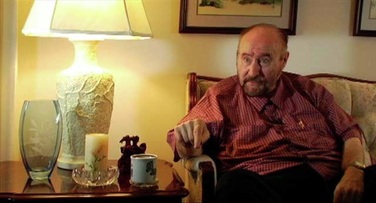
Tom Bearden Lieutenant Colonel U.S. Army (Retired). President and Chief Executive Officer, CTEC, Inc. MS Nuclear Engineering, Georgia Institute of Technology. BS Mathematics, Northeast Louisiana University. Graduate of Command & General Staff College, U.S. Army. Graduate of Guided Missile Staff Officer's Course, U.S. Army (equivalent to MS in Aerospace Engineering). Numerous electronic warfare and counter-countermeasures courses.
Tom is a leading conceptualist in alternate energy technology, mind/matter interaction, EM bioeffects, paranormal phenomena, parapsychology, psychotronics, Tesla technology, and unified field theory concepts. He is the leading advocate of scalar potential electromagnetics, and has worked with several inventors involved in alternate energy devices and scalar electromagnetic system prototypes. He advanced the first force-free redefinition of mass as well as an electromagnetic mechanism that generates the flow of time, and has proposed a testable resolution of the century-old debate over the way in which energy flows in electrical circuits. He defined charge q as a coupled system of two components, and not unitary at all. He advanced a mechanism for electromagnetically producing a vacuum engine, whereby the vacuum itself is utilized to energetically shape and manipulate matter and energy.
In August 1991 Sweet (now deceased) and Bearden reported in the hardcore technical literature Sweet's successful extraction of electromagnetic power (500 watts) from the vacuum, and the world's first highly successful antigravity experiment where the weight of a 6-pound device was reduced by 90 percent on the laboratory bench. Tom recently proposed and released worldwide a simple, novel mechanism for extracting free electrical energy from the vacuum and powering external loads. He and his CTEC colleagues are rapidly pioneering a formal theory of such overunity electrical machines. Four patents have been filed to date and two more are in progress.
He proposed a new mechanism and model for the interaction of EM fields and radiation with biological systems - the fundamental model used by EM bioeffects researchers is inadequate and yields contradictory experiments and studies, difficult or impossible replicability, and almost no fundamental causative mechanisms. Tom discovered and published a fundamental mechanism for generating a quantum potential, which produces action-at-a-distance as well as multiply connected spacetime. Utilizing personal and species quantum potentials, he has redefined cancer in a new light and advanced a primary long-term, cumulative causative mechanism for the disease.
Tom is a leading conceptualist in alternate energy technology, mind/matter interaction, EM bioeffects, paranormal phenomena, parapsychology, psychotronics, Tesla technology, and unified field theory concepts. He is the leading advocate of scalar potential electromagnetics, and has worked with several inventors involved in alternate energy devices and scalar electromagnetic system prototypes. He advanced the first force-free redefinition of mass as well as an electromagnetic mechanism that generates the flow of time, and has proposed a testable resolution of the century-old debate over the way in which energy flows in electrical circuits. He defined charge q as a coupled system of two components, and not unitary at all. He advanced a mechanism for electromagnetically producing a vacuum engine, whereby the vacuum itself is utilized to energetically shape and manipulate matter and energy.
In August 1991 Sweet (now deceased) and Bearden reported in the hardcore technical literature Sweet's successful extraction of electromagnetic power (500 watts) from the vacuum, and the world's first highly successful antigravity experiment where the weight of a 6-pound device was reduced by 90 percent on the laboratory bench. Tom recently proposed and released worldwide a simple, novel mechanism for extracting free electrical energy from the vacuum and powering external loads. He and his CTEC colleagues are rapidly pioneering a formal theory of such overunity electrical machines. Four patents have been filed to date and two more are in progress.
He proposed a new mechanism and model for the interaction of EM fields and radiation with biological systems - the fundamental model used by EM bioeffects researchers is inadequate and yields contradictory experiments and studies, difficult or impossible replicability, and almost no fundamental causative mechanisms. Tom discovered and published a fundamental mechanism for generating a quantum potential, which produces action-at-a-distance as well as multiply connected spacetime. Utilizing personal and species quantum potentials, he has redefined cancer in a new light and advanced a primary long-term, cumulative causative mechanism for the disease.
Nick Begich: Activist & Commentator
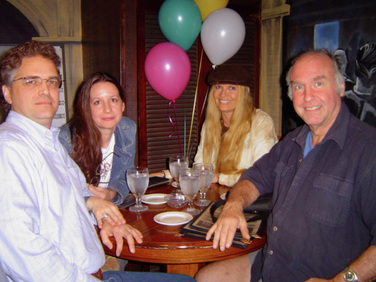
Dr. Nick Begich is the eldest son of the late United States Congressman from Alaska, Nick Begich Sr., and political activist Pegge Begich. He is well known in Alaska for his own political activities. He was twice elected President of both the Alaska Federation of Teachers and the Anchorage Council of Education. He has been pursuing independent research in the sciences and politics for most of his adult life. Begich received Doctor of Medicine (Medicina Alternitiva), honoris causa, for independent work in health and political science, from The Open International University for Complementary Medicines, Colombo, Sri Lanka, in November 1994.
He co-authored with Jeane Manning the book Angels Don't Play This HAARP; Advances in Tesla Technology. Begich has also authored Earth Rising - The Revolution: Toward a Thousand Years of Peace and and his latest book Earth Rising II- The Betrayal of Science, Society and the Soul both with the late James Roderick. His latest work is Controlling the Human Mind - The Technologies of Political Control or Tools for Peak Performance. Begich has published articles in science, politics and education and is a well known lecturer, having presented throughout the United States and in nineteen countries. He has been featured as a guest on thousands of radio broadcasts reporting on his research activities including new technologies, health and earth science related issues. He has also appeared on dozens of television documentaries and other programs throughout the world including BBC-TV, CBC-TV, TeleMundo, and others.
Begich has served as an expert witness and speaker before the European Parliament. He has spoken on various issues for groups representing citizen concerns, statesmen and elected officials, scientists and others. He is the publisher and co-owner of Earthpulse Press. He served as Tribal Administrator/Village Planner for the Chickaloon Village Council, a federally recognized American Indian Tribe of the Athabascan Indian Nation for five years and served four years as the Executive Director of The Lay Institute of Technology, Inc. a Texas non-profit corporation. Currently Begich consults for tribal organizations, private corporations and others in a number of research areas. Dr. Begich is married to Shelah Begich-Slade and has five children and two grandchildren. He resides just north of Anchorage in the community of Eagle River, Alaska, USA.
He co-authored with Jeane Manning the book Angels Don't Play This HAARP; Advances in Tesla Technology. Begich has also authored Earth Rising - The Revolution: Toward a Thousand Years of Peace and and his latest book Earth Rising II- The Betrayal of Science, Society and the Soul both with the late James Roderick. His latest work is Controlling the Human Mind - The Technologies of Political Control or Tools for Peak Performance. Begich has published articles in science, politics and education and is a well known lecturer, having presented throughout the United States and in nineteen countries. He has been featured as a guest on thousands of radio broadcasts reporting on his research activities including new technologies, health and earth science related issues. He has also appeared on dozens of television documentaries and other programs throughout the world including BBC-TV, CBC-TV, TeleMundo, and others.
Begich has served as an expert witness and speaker before the European Parliament. He has spoken on various issues for groups representing citizen concerns, statesmen and elected officials, scientists and others. He is the publisher and co-owner of Earthpulse Press. He served as Tribal Administrator/Village Planner for the Chickaloon Village Council, a federally recognized American Indian Tribe of the Athabascan Indian Nation for five years and served four years as the Executive Director of The Lay Institute of Technology, Inc. a Texas non-profit corporation. Currently Begich consults for tribal organizations, private corporations and others in a number of research areas. Dr. Begich is married to Shelah Begich-Slade and has five children and two grandchildren. He resides just north of Anchorage in the community of Eagle River, Alaska, USA.
Linda Moulton Howe: Investigative Journalist
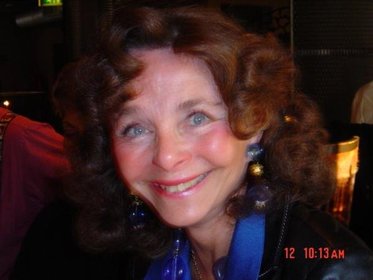
Linda Moulton Howe, is an Emmy Award-winning TV producer, investigative reporter and author who goes directly to the men and women at the forefront of science and environmental challenges and to firsthand eyewitnesses of high strangeness.
Linda Moulton Howe is a graduate of Stanford University with a Masters Degree in Communication. She has devoted her documentary film, television and radio career to productions concerning science, medicine and the environment. Ms. Howe has received local, national and international awards, including three regional Emmys and a national Emmy nomination. Those films have included Poison in the Wind and A Sun Kissed Poison which compared smog pollution in Los Angeles and Denver; Fire In The Water about hydrogen as an alternative energy source to fossil fuels; A Radioactive Water about uranium contamination of public drinking water in a Denver suburb; and A Strange Harvest which explored the worldwide animal mutilation mystery which has haunted the United States and other countries from the mid-20th century to date.
Linda was honored with the Colorado Florence Sabin Award for "outstanding contribution to public health" and received three regional Emmys for Writing Achievement, Directing and Sound Editing for her documentary investigations: Fire in the Water, A Radioactive Water and A Strange Harvest. Linda produced an update to her original documentary, A Strange Harvest, about the continuing worldwide animal mutilation mystery in her independent production, STRANGE HARVESTS 1993. She also contracted with Paramount Studios as Supervising Producer and Original Concept creator for an hour special based on her Earth Mysteries program. That hour, UFO Report: Sightings, was first broadcast in October 1991 and led to the Sightings series on the Fox network. In July 2003, Linda traveled to England to report about the proliferation of crop formations and associated small, mysterious lights there and in other European countries.
Linda has traveled throughout the United States and Canada, Brazil, England, Norway, Egypt, Ethiopia, Kenya, Australia, Japan, Peru, Venezuela, Switzerland, France, Sweden, The Netherlands, Germany, Italy, Turkey, Yugoslavia, Mexico, the Yucatan, and Puerto Rico for research and productions. Linda has written four books: An Alien Harvest which investigates the worldwide animal mutilation phenomenon and Glimpses of Other Realities, Volumes I and II which concern U.S. military, intelligence and civilian testimonies about other forces that interact with earth life. Her fourth book, Mysterious Lights and Crop Circles, was updated in a 2nd Edition with expanded 2001 content and released in July 2002. Linda continues to write, produce and speak at national and international conferences and symposiums, including NASA's Goddard Space Flight Center. In addition to producing, reporting and editing Earthfiles.com, she also produces, writes and reports for television and radio, including segments on The Discovery Channel and weekly science, environment and earth mystery news for the nationally syndicated Clear Channel's Coast to Coast AM and the internet's Dreamland Online. She has been interviewed for a Larry King Live special about Nellis AFB's Area 51 (Dreamland) in Nevada; Day & Date, CBS; Strange Universe, FOX; NBC's The Other Side, cable's Montel Williams; Britain's Union Pictures and Learning Channel TV special Evidence On Earth; and for the companion tape of NBC's network television special, The Mysterious Origins of Man.
Linda Moulton Howe is a graduate of Stanford University with a Masters Degree in Communication. She has devoted her documentary film, television and radio career to productions concerning science, medicine and the environment. Ms. Howe has received local, national and international awards, including three regional Emmys and a national Emmy nomination. Those films have included Poison in the Wind and A Sun Kissed Poison which compared smog pollution in Los Angeles and Denver; Fire In The Water about hydrogen as an alternative energy source to fossil fuels; A Radioactive Water about uranium contamination of public drinking water in a Denver suburb; and A Strange Harvest which explored the worldwide animal mutilation mystery which has haunted the United States and other countries from the mid-20th century to date.
Linda was honored with the Colorado Florence Sabin Award for "outstanding contribution to public health" and received three regional Emmys for Writing Achievement, Directing and Sound Editing for her documentary investigations: Fire in the Water, A Radioactive Water and A Strange Harvest. Linda produced an update to her original documentary, A Strange Harvest, about the continuing worldwide animal mutilation mystery in her independent production, STRANGE HARVESTS 1993. She also contracted with Paramount Studios as Supervising Producer and Original Concept creator for an hour special based on her Earth Mysteries program. That hour, UFO Report: Sightings, was first broadcast in October 1991 and led to the Sightings series on the Fox network. In July 2003, Linda traveled to England to report about the proliferation of crop formations and associated small, mysterious lights there and in other European countries.
Linda has traveled throughout the United States and Canada, Brazil, England, Norway, Egypt, Ethiopia, Kenya, Australia, Japan, Peru, Venezuela, Switzerland, France, Sweden, The Netherlands, Germany, Italy, Turkey, Yugoslavia, Mexico, the Yucatan, and Puerto Rico for research and productions. Linda has written four books: An Alien Harvest which investigates the worldwide animal mutilation phenomenon and Glimpses of Other Realities, Volumes I and II which concern U.S. military, intelligence and civilian testimonies about other forces that interact with earth life. Her fourth book, Mysterious Lights and Crop Circles, was updated in a 2nd Edition with expanded 2001 content and released in July 2002. Linda continues to write, produce and speak at national and international conferences and symposiums, including NASA's Goddard Space Flight Center. In addition to producing, reporting and editing Earthfiles.com, she also produces, writes and reports for television and radio, including segments on The Discovery Channel and weekly science, environment and earth mystery news for the nationally syndicated Clear Channel's Coast to Coast AM and the internet's Dreamland Online. She has been interviewed for a Larry King Live special about Nellis AFB's Area 51 (Dreamland) in Nevada; Day & Date, CBS; Strange Universe, FOX; NBC's The Other Side, cable's Montel Williams; Britain's Union Pictures and Learning Channel TV special Evidence On Earth; and for the companion tape of NBC's network television special, The Mysterious Origins of Man.
Robert Newman: Nyingma Lama, Poet, Artist, Teacher, Wellness Advocate
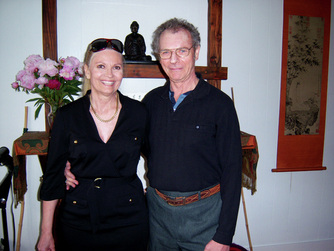
Fluxus Artist, Poet, Lama, Calm Birth, Calm Healing: Robert Bruce Newman is the developer of Calm Birth. From his years of work with doctors, childbirth educators, midwives, nurses, and doulas, has come a new childbirth method. It's based on methods he learned and was authorized to teach during his more than 20 years of apprenticeship with Tibetan meditation teachers and doctors. He has presented more than 100 hospital and conference training seminars in the Calm Birth method since 1997. He has presented the method twice at the world congress of the Association of Pre and Perinatal Psychology and Health (2/02, 3/05), at the University of Michigan Medical School (3/04), and at Bastyr University (4/05). He has taught at the University of Colorado, Naropa University, and the City University of New York. His books include: Calm Birth: New Method for Conscious Childbirth (North Atlantic Books, 10/05); and Calm Healing: Methods for a New Era of Medicine (North Atlantic Books, 11/06). Published feature articles include: The Emergence of Mind/Body Medicine (Sentient Times, 8/99). DISCIPLES OF THE BUDDHA,Living Images of Meditation - with an introduction by Chogyam Trungpa by Robert Newman :
The book Disciples of the Buddha brings together the imagery of the eight surviving "Lohan" statues, from arguably the most renowned of all surviving ceramic works of Eastern art. The complete original work probably consisted of 16 or 18 statues and was a consummate achievement of human ability. They reveal stages and states of meditation. This book gives us a vivid sense of art traditions crucial to the understanding of human skill, the realization of art and a glimpse into a period of history in which those traditions appeared and largely disappeared. Newman, founder and president of the World Health Foundation, has written an unusual and highly engaging text on eight famous statues of the Lohans, principal disciples of Shakyamuni Buddha. The book includes not only plates depicting each of these highly distinctive works of art but also historical backgrounds, reflections by Chogyam Trungpa as well as Newman himself, and a translation of a Tibetan Buddhist text dealing with these and other legendary Buddhist teachers. Pleasing to the eye as well as the mind, this is highly recommended where there is a strong interest in Buddhism or Eastern arts. Introduction to Disciples of the Buddha (2001) is an in-depth interview with Chögyam Trungpa, conducted by Robert Newman and included in Newman's book by that title. Trungpa Rinpoche discusses the meditative realization that can be seen in the I-chou Lohans, Chinese statues of the disciples of the Buddha, which Trungpa felt were powerful expressions of the meditative state of mind. "I think that these statues are expressions of nonverbal experience that the artist had in the state of arhathood. The statues are powerful because they are filled with a state of experience....We could say that these images present the particular realization of Buddha's sanity in his disciples...The images are done with a sense of awe and reverence, in a very sacred application. And so the images are very human at the same time kind of superhuman".- Chogyam Trungpa (from the introduction)
"Robert Newman's Disciples of the Buddha results from many years of study from both inside and outside the Buddhist community. This thoughtful study of the remarkably life-like ceramic sculptures of the Tang Dynasty casts a searching light on a tradition long lost. Are these images more than their physical substance? Can one define their spirituality? This work teases us into an urgent sense of reality. " -Ronald M. Bernier, Professor of Art History, University of Colorado. Several ceramic statues of Lohans, legendary disciples of Shakyamuni Buddha, were brought into the Peking art market in 1913. They had been found by pirates in a secluded shrine cave, high on a mountain, not easily accessible, near I-Chou, Hopei Province. The statues may have been in the cave for centuries. They are called the "I-Chou Lohans". All are distinguished by a dramatic life-like presence. We do not know who made the statues or where they were made. There were probably 16 or 18 in the original set. They may have been made in a ceramic factory or in a monastary. We will never know the external circumstances of their creation and yet these disciples look as fresh and alive as if they just came out of the kiln. We can sense from them the depth and range of the entire original work.
The original set of statues was a large scale work representing direct connection to the Buddha. The statues are human images with superhuman features. They are living portraits of meditation that connect us to our potential, the awakened state. Fredrick Perzynski remembers when the first of the I-Chou Lohan statues appeared in the Peking art market. "At the time we called him a priest since, despite his traditionally elongated ears, he emanated the striking pictoral power of a portrait." Upon discovering another of the I-Chou Lohans he notes: "His neck is broken off, as well as a piece from his shoulder and his feet. In his hands he holds a scroll. His head leans against the wall next to the torso. In its coloring of faded ivory it appears like the head of a decapitated man. As on the previous occasions in seeing [I-Chou Lohan statues] its powerful expression affects me like an electric shock." * Sometime in 1969, I was wandering through the Metropolitan Museum of Art in New York City. I walked into the presence of two of the I-Chou Lohan statues. At the moment that I started to step closer to one of them, I had what is the most remarkable experience I've ever had with a work of art. I saw something impossible, something miraculous. The statue was alive. I thought what I was seeing was a living form. I was then moved by the sense of flesh, the tissue quality in the throat, in the mouth, up into the cheekbones, into the enlarged brows, over and between the eyes. The statue had large buddha ears. The mouth was closed and the expression was silent. The eyes were open and I felt that they were seeing me. There seemed to be a force in the eyes, and knowledge of flesh and mind; a real sense of the world; a haunting smile; and stillness. I began to ask about the statues. People thought they were extraordinary, and some had striking experiences with them, seeing them as alive.
* See Marion Wolfe's article, "The Lohans From I-Chou" Oriental Art, Vol. XV, #1, Spring 1969. Perzynski's involvement in the discovery of the I-Chou Lohans is described there. He seems to have been centrally responsible for the placement of several of the I-Chou Lohans in western museums.
The Inner Meaning of Legendary Works of Buddhist Art slide lecture presents life-like images of renowned statues of the disciples of the Buddha (Lohans, Chinese; Arhats, Sanskrit). The ceramic statues constitute the remaining half of the greatest single work of art from the Orient. These are the famous statues that embody the wisdom and compassion of the Buddha reflected in his direct disciples. They reveal many qualities of realization. The images are from the book, Disciples of the Buddha; Living Images of Meditation by Robert Bruce Newman. It has an extensive introduction by Chogyam Trungpa Rinpoche, the revered Buddhist meditation master. He said of these lohan-disciples: "I think that the statues are expressions of nonverbal experience that the artist had in the state of arhathood. The statues are powerful because they are filled with a state of experience. We could say that these images present the particular realization of the Buddha's sanity in his disciples. The images are done with a sense of awe and reverence, in a very sacred application. And so the images are very human and at the same time kind of superhuman." Robert Bruce Newman worked closely with Tibetan meditation masters and doctors for more than 20 years. He was authorized to teach the meditation practice embodied in the work he is presenting. He taught at the University of Colorado, Naropa University, and the City University of New York. His publications include: The Lohan Statues and the Stages of Realization; Loca, Random House, 2/75 Disciples of the Buddha; Living Images of Meditation; Cool Grove Press, 4/01The I-Chou Lohan Statues; Shambhala Sun, Halifax, NS; 5/01 Calm Birth; New Method for Conscious Childbirth; North Atlantic Books; 10/05 Calm Healing; Medicine for a New Era; North Atlantic Books; 11/06 Mr. Newman is president of Medigrace, which has been researching and developing programs in the medical uses of meditation since 1991. He has presented more than 100 training seminars in West Coast hospitals since 1997.
The book Disciples of the Buddha brings together the imagery of the eight surviving "Lohan" statues, from arguably the most renowned of all surviving ceramic works of Eastern art. The complete original work probably consisted of 16 or 18 statues and was a consummate achievement of human ability. They reveal stages and states of meditation. This book gives us a vivid sense of art traditions crucial to the understanding of human skill, the realization of art and a glimpse into a period of history in which those traditions appeared and largely disappeared. Newman, founder and president of the World Health Foundation, has written an unusual and highly engaging text on eight famous statues of the Lohans, principal disciples of Shakyamuni Buddha. The book includes not only plates depicting each of these highly distinctive works of art but also historical backgrounds, reflections by Chogyam Trungpa as well as Newman himself, and a translation of a Tibetan Buddhist text dealing with these and other legendary Buddhist teachers. Pleasing to the eye as well as the mind, this is highly recommended where there is a strong interest in Buddhism or Eastern arts. Introduction to Disciples of the Buddha (2001) is an in-depth interview with Chögyam Trungpa, conducted by Robert Newman and included in Newman's book by that title. Trungpa Rinpoche discusses the meditative realization that can be seen in the I-chou Lohans, Chinese statues of the disciples of the Buddha, which Trungpa felt were powerful expressions of the meditative state of mind. "I think that these statues are expressions of nonverbal experience that the artist had in the state of arhathood. The statues are powerful because they are filled with a state of experience....We could say that these images present the particular realization of Buddha's sanity in his disciples...The images are done with a sense of awe and reverence, in a very sacred application. And so the images are very human at the same time kind of superhuman".- Chogyam Trungpa (from the introduction)
"Robert Newman's Disciples of the Buddha results from many years of study from both inside and outside the Buddhist community. This thoughtful study of the remarkably life-like ceramic sculptures of the Tang Dynasty casts a searching light on a tradition long lost. Are these images more than their physical substance? Can one define their spirituality? This work teases us into an urgent sense of reality. " -Ronald M. Bernier, Professor of Art History, University of Colorado. Several ceramic statues of Lohans, legendary disciples of Shakyamuni Buddha, were brought into the Peking art market in 1913. They had been found by pirates in a secluded shrine cave, high on a mountain, not easily accessible, near I-Chou, Hopei Province. The statues may have been in the cave for centuries. They are called the "I-Chou Lohans". All are distinguished by a dramatic life-like presence. We do not know who made the statues or where they were made. There were probably 16 or 18 in the original set. They may have been made in a ceramic factory or in a monastary. We will never know the external circumstances of their creation and yet these disciples look as fresh and alive as if they just came out of the kiln. We can sense from them the depth and range of the entire original work.
The original set of statues was a large scale work representing direct connection to the Buddha. The statues are human images with superhuman features. They are living portraits of meditation that connect us to our potential, the awakened state. Fredrick Perzynski remembers when the first of the I-Chou Lohan statues appeared in the Peking art market. "At the time we called him a priest since, despite his traditionally elongated ears, he emanated the striking pictoral power of a portrait." Upon discovering another of the I-Chou Lohans he notes: "His neck is broken off, as well as a piece from his shoulder and his feet. In his hands he holds a scroll. His head leans against the wall next to the torso. In its coloring of faded ivory it appears like the head of a decapitated man. As on the previous occasions in seeing [I-Chou Lohan statues] its powerful expression affects me like an electric shock." * Sometime in 1969, I was wandering through the Metropolitan Museum of Art in New York City. I walked into the presence of two of the I-Chou Lohan statues. At the moment that I started to step closer to one of them, I had what is the most remarkable experience I've ever had with a work of art. I saw something impossible, something miraculous. The statue was alive. I thought what I was seeing was a living form. I was then moved by the sense of flesh, the tissue quality in the throat, in the mouth, up into the cheekbones, into the enlarged brows, over and between the eyes. The statue had large buddha ears. The mouth was closed and the expression was silent. The eyes were open and I felt that they were seeing me. There seemed to be a force in the eyes, and knowledge of flesh and mind; a real sense of the world; a haunting smile; and stillness. I began to ask about the statues. People thought they were extraordinary, and some had striking experiences with them, seeing them as alive.
* See Marion Wolfe's article, "The Lohans From I-Chou" Oriental Art, Vol. XV, #1, Spring 1969. Perzynski's involvement in the discovery of the I-Chou Lohans is described there. He seems to have been centrally responsible for the placement of several of the I-Chou Lohans in western museums.
The Inner Meaning of Legendary Works of Buddhist Art slide lecture presents life-like images of renowned statues of the disciples of the Buddha (Lohans, Chinese; Arhats, Sanskrit). The ceramic statues constitute the remaining half of the greatest single work of art from the Orient. These are the famous statues that embody the wisdom and compassion of the Buddha reflected in his direct disciples. They reveal many qualities of realization. The images are from the book, Disciples of the Buddha; Living Images of Meditation by Robert Bruce Newman. It has an extensive introduction by Chogyam Trungpa Rinpoche, the revered Buddhist meditation master. He said of these lohan-disciples: "I think that the statues are expressions of nonverbal experience that the artist had in the state of arhathood. The statues are powerful because they are filled with a state of experience. We could say that these images present the particular realization of the Buddha's sanity in his disciples. The images are done with a sense of awe and reverence, in a very sacred application. And so the images are very human and at the same time kind of superhuman." Robert Bruce Newman worked closely with Tibetan meditation masters and doctors for more than 20 years. He was authorized to teach the meditation practice embodied in the work he is presenting. He taught at the University of Colorado, Naropa University, and the City University of New York. His publications include: The Lohan Statues and the Stages of Realization; Loca, Random House, 2/75 Disciples of the Buddha; Living Images of Meditation; Cool Grove Press, 4/01The I-Chou Lohan Statues; Shambhala Sun, Halifax, NS; 5/01 Calm Birth; New Method for Conscious Childbirth; North Atlantic Books; 10/05 Calm Healing; Medicine for a New Era; North Atlantic Books; 11/06 Mr. Newman is president of Medigrace, which has been researching and developing programs in the medical uses of meditation since 1991. He has presented more than 100 training seminars in West Coast hospitals since 1997.
Paul Henrickson, PhD - Art Critic, Malta
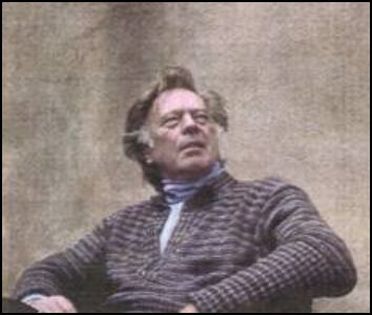
Creativity Packet is an innovative puzzle that liberates creative spirit. Dr. Paul and I both share an aesthetic and a vital interest in the nature and expression of creativity, based on the works of our respective mentors, Dr. Torrence and Dr. John Curtis Gowan (both experts on creativity and taxonomies of creative states or the continuum of creativity). Through his juxtapositions of art with commentary, I've learned as much from Dr. Paul about pattern recognition as I have from my intelligence contacts though in a much different way. He also has plenty to say about educational practice and art production.
Dr. Paul Henrickson was born in Massachusetts, (USA). He attended The Rhode Island School of Design, The University of Massachusetts (Boston), Clark University (Worcester), Statens Kunstakademiet (Oslo, Norway), The University of Oslo, and got his doctorate at The University of Minnesota. Dr. Paul Henrickson offered art criticism seminars in New Mexico, has administered Art Departments and Divisions of Fine Arts at Vallet City State College, (North Dakota), Radford University, (Virginia), The University of Guam, (M.I.) and was on research assignments at The University of Minnesota and the University of Northern Iowa where the background for The Creativity Packet was originated. Dr. Henrickson has also published articles in several professional journals in the areas of education, art and archeology, and presented research results, along with Dr. R.E.Taylor, at the South Eastern Psychological Association meeting in Miami, Florida.
Dr. Paul Henrickson was born in Massachusetts, (USA). He attended The Rhode Island School of Design, The University of Massachusetts (Boston), Clark University (Worcester), Statens Kunstakademiet (Oslo, Norway), The University of Oslo, and got his doctorate at The University of Minnesota. Dr. Paul Henrickson offered art criticism seminars in New Mexico, has administered Art Departments and Divisions of Fine Arts at Vallet City State College, (North Dakota), Radford University, (Virginia), The University of Guam, (M.I.) and was on research assignments at The University of Minnesota and the University of Northern Iowa where the background for The Creativity Packet was originated. Dr. Henrickson has also published articles in several professional journals in the areas of education, art and archeology, and presented research results, along with Dr. R.E.Taylor, at the South Eastern Psychological Association meeting in Miami, Florida.
Paul Wildman PhD
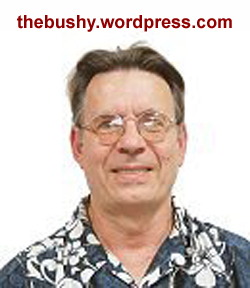
Dr. Paul Wildman of Brisbane, Australia and myself have written and worked together since 2004 on the Bushy/Artificer project and Science Artificer Guild, Int'l. Our research include the nature of the creative field, do it yourself creativity, and learning style, particularly learning by doing. Works include THE DEMIURGIC FIELD and GLOCALIZATION with Prof. Robert Pope of Science-Art Centre, Australia.
We have done many projects, written peer-reviewed journal articles together, and share seats on the board of CARFT magazine.
http://bushie.weebly.com/
We have done many projects, written peer-reviewed journal articles together, and share seats on the board of CARFT magazine.
http://bushie.weebly.com/
Ken Webb: SpecOps Snake Eater [deceased]
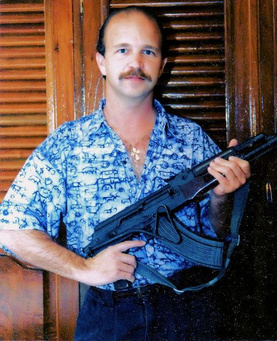
Former Ranger and SpecOps Special Agent Ken Webb sent his sister to me for healing and deprogramming and stayed to brief me over a few years on the basics of intelligence work. His missions included Guatamala and the apprehension of Panamanian President Manuel Noreiga, at who's trial he testified to an unusual standing ovation. He taught me how agents think and what they can and cannot disclose in terms of insider stories. Most of his missions for several agencies remain classified. He is one of the few special agents who worked for multiple intelligence groups.
Charles Stone: Investigative Journalist, Media Consultant, Microbiologist
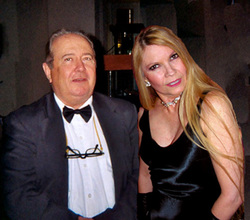
Microbiologist, CHARLES W. STONE is an entrepreneur and investigator in Washington D.C., speaking and publishing internationally on weapons of mass destruction, pandemics, global mind control, biowarfare, WWII arcana, Constitutional rights, due process in education, health care reform, and other Federal operations. Freedom, accountability, fairness and Constitutionality are his issues. As Deputy Director of the highly unusual D.C. thinktank Mankind Research Unlimited (MRU), he worked with the Federal Government to apply innovative approaches to national problems including AIDS, drug and alcohol abuse, cancer and more. From the early ‘70s, MRU pioneered psychotronics, biocybernetics, biophysics, psycho-physiology, accelerated learning, psi and mind-body research.
Mr. Stone is a financial consultant, investigative writer, and is available for interviews, publishing, as a news commentator and panelist on his specialty topics, including entertainment industry, microbiology, the paranormal, Gulf War Syndrome and Washington D.C. insider view.
Mr. Stone is a financial consultant, investigative writer, and is available for interviews, publishing, as a news commentator and panelist on his specialty topics, including entertainment industry, microbiology, the paranormal, Gulf War Syndrome and Washington D.C. insider view.
Kentel: If I Told You, You Would Have to Die
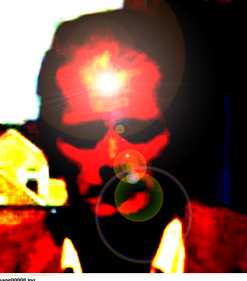
MRU alumni, Intelligence Scientist, PsyOps, PsiOps, RV
MRU: A thinktank and research organization that aimed: "to combine the efforts of leading researchers and experimenters in the multi-disciplinary and interacting fields of human development and humanistic psychology which include research involving the body, mind and those forces and phenomena acting upon the health, education and welfare of mankind. Areas of study include biocommunication, biocybernetics, biophysics, psycho-physiology, educational development, cancer research and mind-body developments."
MRU: A thinktank and research organization that aimed: "to combine the efforts of leading researchers and experimenters in the multi-disciplinary and interacting fields of human development and humanistic psychology which include research involving the body, mind and those forces and phenomena acting upon the health, education and welfare of mankind. Areas of study include biocommunication, biocybernetics, biophysics, psycho-physiology, educational development, cancer research and mind-body developments."
Leutrell Osborne, Sr.: CIA Veteran, Activist, Commentator, Entrepreneur
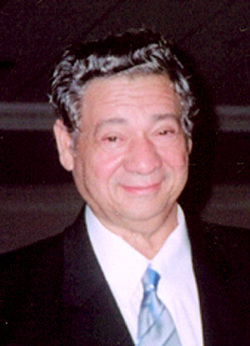
Leutrell “Mike” Osborne joined the CIA in 1957, and became one of the first African American Case Officers (C/O). He directed CIA agents and assets in over 24 countries on three continents. Mr. Osborne is the only C/O to also serve as a Communications Security Officer (COMSEC Officer) for over six years. Mr. Osborne resigned his post at CIA in 1984 to pursue private sector opportunities. He returned to government service in 1989, where he oversaw Small Business Administration contracting programs for the Office of Personnel Management.
In 1994, Mr. Osborne retired from Federal Government after 31 years of service. He then returned to private sector advising small businesses on the acquisition of government contracts. In addition, he began an active schedule of personal appearances, radio interviews and television commentary. He and his wife, Rose, have been married for more than 50 years and have five children. Mr. Osborne lives in Annapolis, Maryland and spends his time with family, working on his memoirs, writing fiction and providing inspirational and transformational leadership speeches to audiences throughout the country.
As CHIEF VISIONARY OFFICER of LEUTRELL OSBORNE & ASSOCIATES (LOA) and the Founder and Managing Director of the Dark Operative Series, LLC, Mr. Osborne is available for speaking engagements and consulting opportunities. He overcame many economic, educational and discriminatory challenges to become one of the first African American Case Officers in the Central Intelligence Agency. As a Case Officer, Mr. Osborne had the opportunity to recruit and manage spies, travel the world and helped fight the Cold War.
After transferring to COMSEC in 1976, Mr. Osborne became involved with the higher echelons of the science and technology of counter intelligence. Throughout his career, Mr. Osborne displayed a passion to continually analyze and improve processes to achieve more optimal results. In 1984, Mr. Osborne took these transformation skills into the private sector as an independent business owner and private consultant. After coming to understand the challenges facing small businesses, Mr. Osborne was hired by the Office of Personnel Management to oversee its small business contracting programs.
As an inspirational speaker and expert in national security, Mr. Osborne speaks and consults with leaders of industry and government, young people aspiring to careers in the agencies and departments of the intelligence community. Audiences find Mr. Osborne’s presentations engaging, motivating, informative and humorous. He has also appeared on numerous radio and television programs speaking on problems related to security and countering national and foreign threats. Mr. Osborne believes that his mission here on planet Earth is to make the world a better place by pursuing justice, righteousness and equality. He characterizes himself as a Spirit in human form, and that Spirit is infectious.
Leutrell M. Osborne, Sr. is a recognized national and international security expert who provided executive business coaching services during the ten years since retiring from the Federal Government in 1994. For 26 years, the Central Intelligence Agency (CIA) sent him to over 30 countries on three different continents as a Case Officer and Communications Security Officer. While serving his last five years of Federal Government employment he was at the Office of Personnel Management (OPM). Mr. Osborne performed small business advocacy services overseeing programs of the Small Business Administration (SBA). After retiring from the OPM, he interviewed business and government officials on small business contracting opportunities in the Federal Government. During that period and especially while he was a CIA Case Officer, Mr. Osborne debriefed and interviewed foreign and US officials on threats and security matters pertaining to United States homeland security. This extensive expertise enables Mr. Osborne to incorporate human and technical intelligence information collecting as core competencies of his inspirational leadership style. Mr. Osborne is a native of Washington D.C, who now serves as the leadership source at the International Institute of Culture (IIC) which is an emerging virtual university that allows entrepreneurs to build their enterprises using the Internet.
In 1994, Mr. Osborne retired from Federal Government after 31 years of service. He then returned to private sector advising small businesses on the acquisition of government contracts. In addition, he began an active schedule of personal appearances, radio interviews and television commentary. He and his wife, Rose, have been married for more than 50 years and have five children. Mr. Osborne lives in Annapolis, Maryland and spends his time with family, working on his memoirs, writing fiction and providing inspirational and transformational leadership speeches to audiences throughout the country.
As CHIEF VISIONARY OFFICER of LEUTRELL OSBORNE & ASSOCIATES (LOA) and the Founder and Managing Director of the Dark Operative Series, LLC, Mr. Osborne is available for speaking engagements and consulting opportunities. He overcame many economic, educational and discriminatory challenges to become one of the first African American Case Officers in the Central Intelligence Agency. As a Case Officer, Mr. Osborne had the opportunity to recruit and manage spies, travel the world and helped fight the Cold War.
After transferring to COMSEC in 1976, Mr. Osborne became involved with the higher echelons of the science and technology of counter intelligence. Throughout his career, Mr. Osborne displayed a passion to continually analyze and improve processes to achieve more optimal results. In 1984, Mr. Osborne took these transformation skills into the private sector as an independent business owner and private consultant. After coming to understand the challenges facing small businesses, Mr. Osborne was hired by the Office of Personnel Management to oversee its small business contracting programs.
As an inspirational speaker and expert in national security, Mr. Osborne speaks and consults with leaders of industry and government, young people aspiring to careers in the agencies and departments of the intelligence community. Audiences find Mr. Osborne’s presentations engaging, motivating, informative and humorous. He has also appeared on numerous radio and television programs speaking on problems related to security and countering national and foreign threats. Mr. Osborne believes that his mission here on planet Earth is to make the world a better place by pursuing justice, righteousness and equality. He characterizes himself as a Spirit in human form, and that Spirit is infectious.
Leutrell M. Osborne, Sr. is a recognized national and international security expert who provided executive business coaching services during the ten years since retiring from the Federal Government in 1994. For 26 years, the Central Intelligence Agency (CIA) sent him to over 30 countries on three different continents as a Case Officer and Communications Security Officer. While serving his last five years of Federal Government employment he was at the Office of Personnel Management (OPM). Mr. Osborne performed small business advocacy services overseeing programs of the Small Business Administration (SBA). After retiring from the OPM, he interviewed business and government officials on small business contracting opportunities in the Federal Government. During that period and especially while he was a CIA Case Officer, Mr. Osborne debriefed and interviewed foreign and US officials on threats and security matters pertaining to United States homeland security. This extensive expertise enables Mr. Osborne to incorporate human and technical intelligence information collecting as core competencies of his inspirational leadership style. Mr. Osborne is a native of Washington D.C, who now serves as the leadership source at the International Institute of Culture (IIC) which is an emerging virtual university that allows entrepreneurs to build their enterprises using the Internet.
